
Chocolate brown fur, a pointy face and rounded ears give fisher the appearance of an old-fashioned teddy bear. Yet biologists call it “the ninja of the forest.” A fisher is about the size of a housecat, but stretched out like a limo, and it’s one of the fastest land animals on the planet when it comes to short bursts of speed. It’s also known for its ferocity. A fisher will attack and eat a porcupine two or three times its size, zipping in to bite the porcupine’s nose and dashing away to avoid a tail of quills that strikes like a lightning bolt.
If you’re planning to go out in the woods, though, don’t expect to see this little-known member of the weasel family. Even scientists who study fisher rarely see them in the wild. If they do, according to B.C. government biologist Rich Weir, it’s “like winning the lottery.” You’re also unlikely to see a fisher in a zoo; they make poor animals to exhibit because they tend to hide from onlookers all day.
In late March or early April, when it comes time to give birth, the female fisher looks for a tree with an opening just wide enough for her to squeeze into, to avoid predators like lynx and coyote. The tree must have sufficient heart rot for an internal cavity about 30 centimetres in diameter, with room for up to four kits, which are born deaf, blind and only partially covered with fine hair.
In British Columbia, only five tree species out of 40 in the province — cottonwood, trembling aspen, balsam poplar, lodgepole pine and Douglas fir — will suffice. The tree must be at least 125 years old if it’s an aspen; a Douglas fir will have to be at least 250, and likely much older. And there will need to be a minimum of two such trees for each pregnant fisher, because a new mother will grab her young by the scruff of their necks and move house to avoid parasites and predators.

A young fisher sits on a log. When born, fisher are blind, deaf and only partially covered with fine hair. Females give birth to a maximum of four kits in each litter and usually there are only two to three youngsters. Many fisher kits will not survive their first year. Photo: Shutterstock
In December 2014, Wayne and Leilah Kirsh skidooed into their cabin on Deepdown Lake in the rolling hills of the Nazko region, southwest of Prince George. They always looked forward to their sojourns in the wilderness. By day, they checked their trapline for fisher and other furbearers, enjoying the peaceful solitude of the woods. By night, warmed by a wood stove, they watched sunsets tinge the snowy lake peach.
The couple had always been careful not to trap more fisher than local populations could sustain. The Nazko, where they harvested 25 to 35 fisher annually, boasted some of the highest densities of fisher in all of B.C. But that winter, alarmingly, it seemed there was nothing left to trap. The odd weasel, a nuisance coyote or two — that was all.
The fishers were gone. On top of Wayne’s grief for his lost way of life, he was also just plain mad.
His trapline, circling 1,800 square kilometres of forests, meadows and wetlands, was awash in a brown sea of logging cut blocks. Some clear cuts were eight kilometres long, the equivalent of 100 city blocks. Forestry companies, in a pell-mell rush to harvest trees damaged by the mountain pine beetle — while also trucking out large, healthy spruce and fir — had left virtually nothing in their wake. Just stumps and debris, Wayne says.
“As far as you could see, there was not one tree standing.”
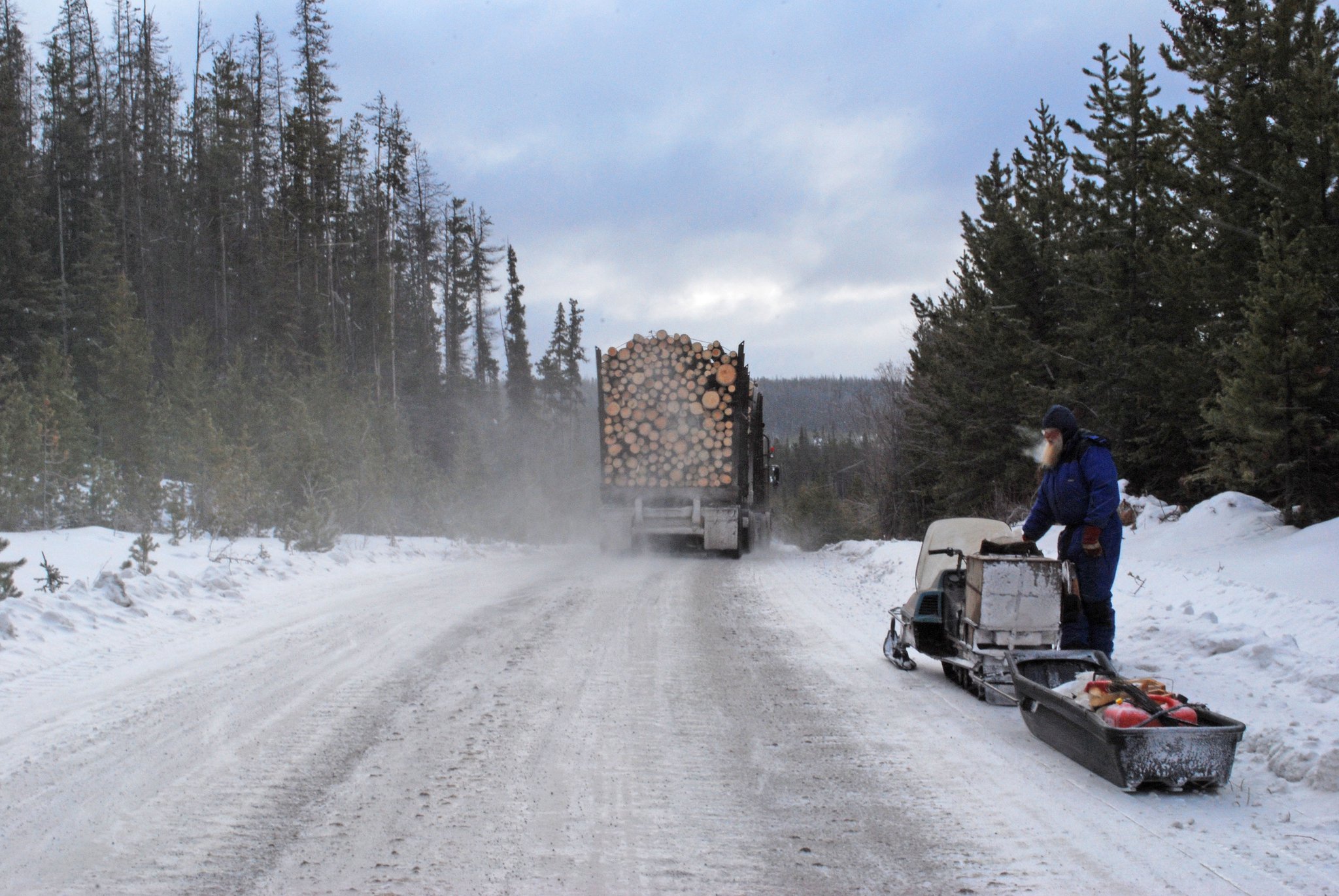
Wayne and Leilah Kirsh used to trap fisher in B.C.’s Nazko region, but as the forest around their trapline was clear-cut, the animals disappeared. Photo: Leilah Kirsh
The couple had tried everything they could think of to convince the forest companies and the B.C. government to protect the fisher’s habitat. Wayne figured that people would listen. After all, he’d been a mill worker for 37 years, driving a forklift and loading railcars. So he walked uninvited into local mill operations, imploring companies to leave behind sufficient denning and resting trees, in accordance with B.C. forestry regulations. He and Leilah pleaded with local MLAs.
In a 2014 letter to then-forests minister Steve Thomson, the couple warned, “If these proposed logging blocks are allowed to continue at the on-going rate there will be NO suitable habitat for fisher and it will, without a doubt, become a red-listed species in this province.”
Thomson emailed back, saying the government was “working to understand” how land-use objectives for managing fisher were being met.
“Nobody gave a rat’s ass about it,” Wayne says.
The Kirshes are far from alone in their concern about a dramatic loss of wildlife in B.C., the most biodiverse of Canada’s provinces and territories, and the one with the highest number of species at risk of extinction.
For years, Canada’s most western province has marketed itself as “Super, Natural, B.C.” But, as the story of the fisher shows, the B.C. government is failing to protect the myriad species that inhabit the province’s many ecosystems, from the coast to the mountain tops and from grasslands to old-growth forests, with worrisome consequences for biodiversity. Last year, a landmark UN report found that nature is declining at an unprecedented rate and extinctions are accelerating, with almost one million species at risk of disappearing globally.
Almost 1,340 species are now on B.C.’s red and blue lists of species at risk of extinction. Another 1,037 species meet the provincial status requirements for red and blue listings but have not yet been added, in part because more information is needed. The Committee on the Status of Endangered Wildlife in Canada has found that additional B.C. species, including more than one dozen unique salmon populations, are experiencing alarming declines. Yet those species, too, have no provincial at-risk status.
Wayne and Leilah are sitting on the living room couch at their small cattle ranch near Quesnel when I call. They don’t use Zoom or Skype, so we talk on the phone, the two of them on speaker, jostling good naturedly for airtime.
Wayne looks like a quintessential trapper, a “Grizzly Adams,” according to Leilah. He’s lanky and blue-eyed, with a long grey beard. When Leilah, who is dark-haired and handy with a chainsaw, tells people she’s a trapper they usually stare in disbelief.
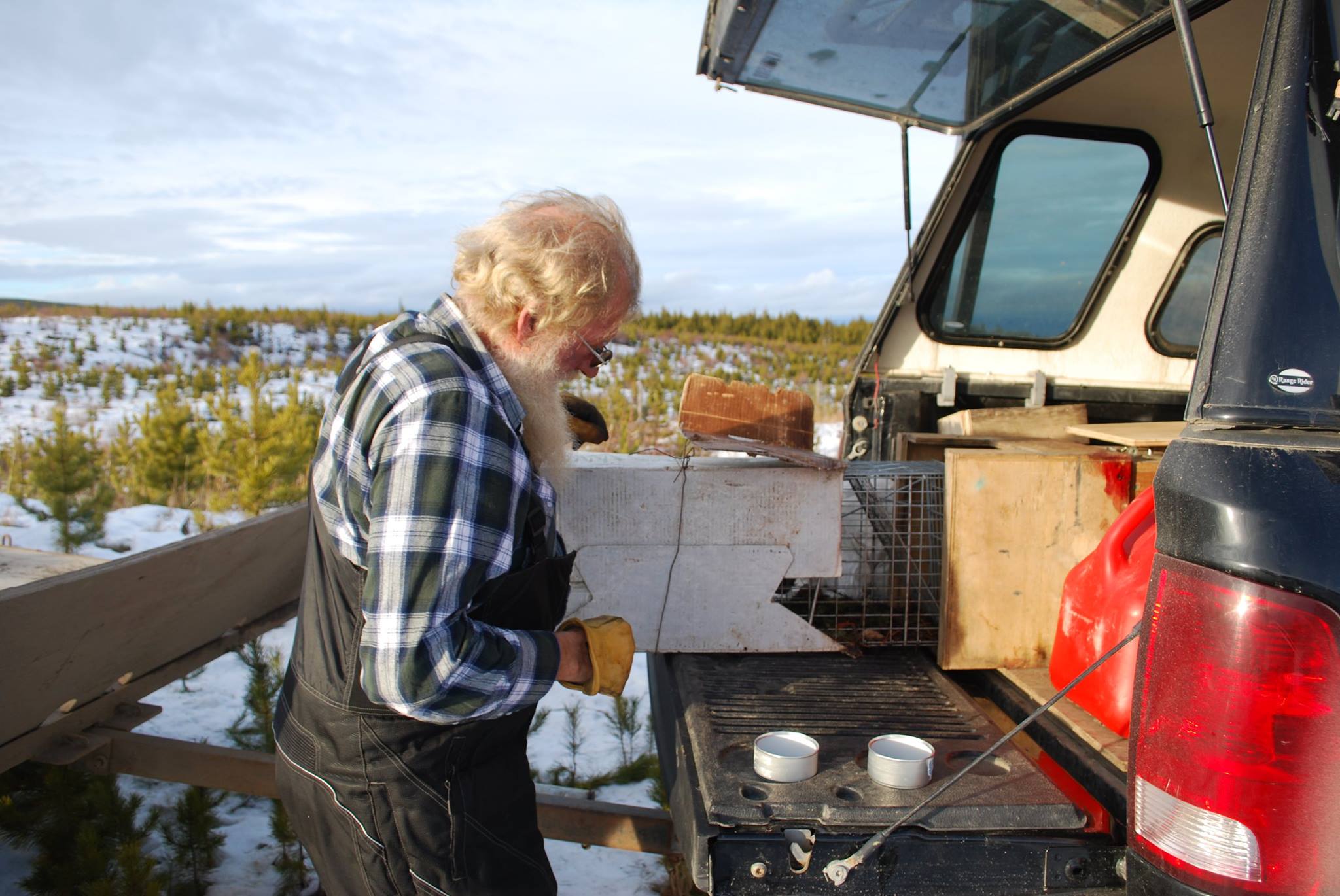
Trapper and cattle rancher Wayne Kirsh takes a break at the back of his truck in B.C.’s interior. Photo: Leilah Kirsh
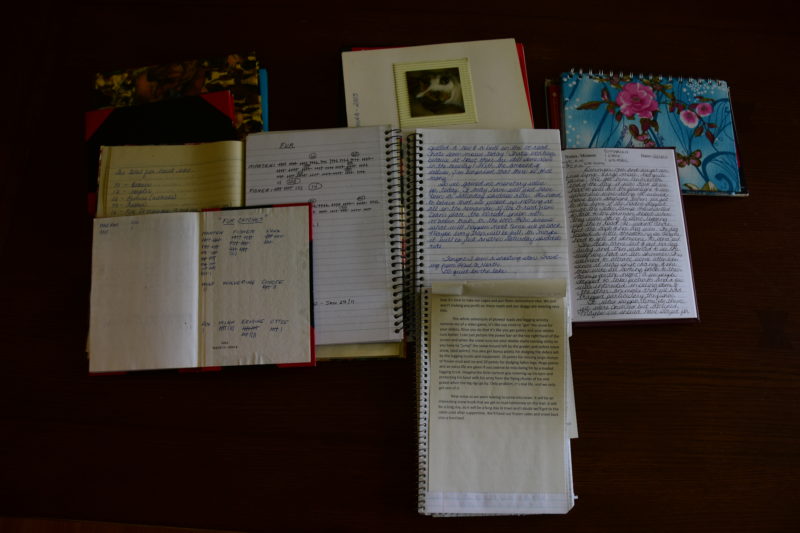
Leilah Kirsh kept track of each furbearer she and her husband trapped during their years on the Nazko trapline. Photo: Leilah Kirsh
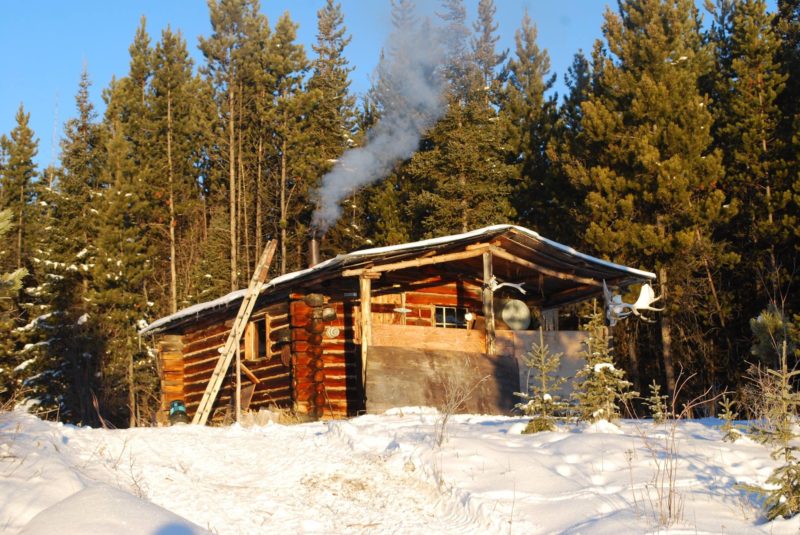
The Kirshes’ trap line cabin at Deepdown Lake in B.C.’s interior. Photo: Leilah Kirsh
Trapping is both a hobby and a way to earn a little extra cash by selling furs. From a cupboard, Leilah pulls out the hard-cover journals she kept during the couple’s years on the Nazko trapline. On lined paper, sitting in the log cabin after dinner and chores, she had neatly recorded each furbearer trapped, along with the temperature, date and location.
In December 2003, along a run that took no more than a half-day to cover by skidoo, the Kirshes picked up three fishers, far less than they expected based on the harvest from previous years. Seven years later, in early December in the same area, they trapped only one fisher — but this time on a full day run. Retracing the route the following year, in 2011, they came up empty handed.
“We’d go from getting fisher every day to getting fisher once in a blue moon,” Leilah says, likening fisher to a miniature wolverine, but with a bushy tail and musky smell.
“It’s not just about the trapping,” she says. “There’s nothing out there for anyone else to enjoy: the general public. They’ve logged right down to the lakes. You don’t really see a lot of wildlife, not like we used to.”
Marten, red fox, moose, wolverine, eagle, whisky jack, great horned owl — they were gone too.
“They’ve logged right down to the lakes. You don’t really see a lot of wildlife, not like we used to.”
The government-run B.C. Conservation Data Centre collects and shares scientific data and information about species and ecosystems in the province. Each year, the centre assesses hundreds of species and several dozen ecosystems, assigning them a number from S1 to S5 (the ‘S’ indicates it is a subnational designation.) A S5 means populations are secure. A S1 indicates the species or population is critically imperilled.
Scoring a one or two will springboard a species onto the red list, meaning it should be in the equivalent of a hospital’s intensive care unit because it’s in danger of winking out in the province. A two or three earns a spot on the blue list, signalling that scientists are concerned about a species and are keeping an eye on it, much like a regular medical check-up for a pre-existing condition that might worsen and become life-threatening.
This past year, it was the fisher’s turn for assessment. When conservation data centre manager Damien Joly saw the results in March, he steeled himself for some difficult conversations.
Joly, a biologist with a background in wildlife disease, had been manager of the data centre for two years. He’s a firm believer in what he likens to “the separation of church and state.” Science is one matter, policy another. “We just take the data,” he says. “We focus on the science and come up with an objective assessment of the status of the species.”
Joly’s staff had spent months pouring over the data, in collaboration with other government biologists; now Joly would have to explain to government employees how the data centre arrived at its results. It would be up to the Ministry of Forests, Lands and Natural Resource Operations to determine what policy steps would have to be taken to recover fisher populations.
For the first time, B.C.’s two blue-listed fisher populations — the Columbia population in the interior and the boreal population in the northeast — had been assessed separately.
New data showed the populations, cleaved apart by the Rocky Mountains and deep snow, which the fisher’s relatively small feet have difficulty navigating, were genetically distinct. Scientists were surprised to discover the interior population had mitochondrial and nuclear DNA not found in fisher populations anywhere else.
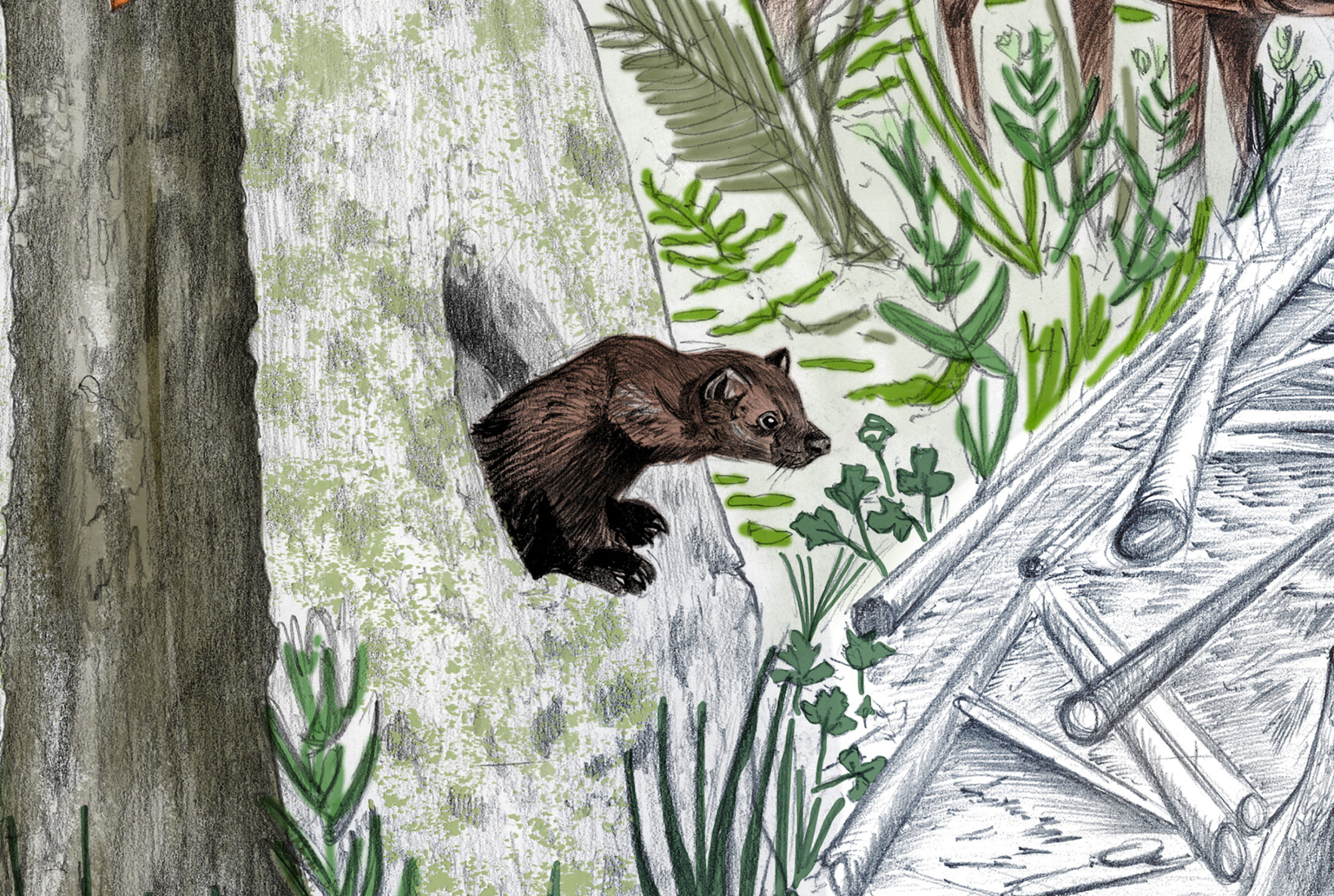
The female fisher looks for a tree with an opening just wide enough for her to squeeze into, to avoid predators like lynx and coyote. The tree must have sufficient heart rot for an internal cavity about 30 centimetres in diameter, providing enough room for up to four kits. Illustration: Sarah Hammond / The Narwhal
Biologists had previously assumed that interior fisher populations would get help from their boreal cousins further to the east and north, which are more robust in number. “But we’ve found there really isn’t that connection at all,” Weir says, “and it’s left us going ‘holy crap.’ The central interior population, because it’s isolated, is much more vulnerable.”
In April, with interior fisher population numbers low and threats high, the conservation data centre assigned fisher a new status, in keeping with international standards for assessing species at risk.
The interior fisher is now on B.C.’s red list — just as Wayne foretold.
Red and blue listing in B.C. is currently an empty exercise, however, because species at risk of extinction receive no unified legal protection in the province.
Unlike six other provinces and the United States, which shares transboundary and migratory species with B.C. — including caribou, songbirds and spotted owls — British Columbia has no stand-alone endangered species law. Instead, it relies on an uncoordinated mish mash of legislation to conserve plants and animals, including the Forests and Range Practices Act, the Oil and Gas Activities Act, and the Environment and Land Use Act.
Although the governing NDP made an election promise to enact endangered species legislation — a pledge upheld in Premier John Horgan’s mandate letter for Environment Minister George Heyman — it subsequently reneged on its commitment. That leaves B.C. with a mounting “extinction debt” that scientists say the province will soon be obliged to pay, in a reckoning that will remake our natural world into something far less diverse, abundant and wondrous.
Ask biologists who study small carnivores about the fisher and they light up with stories about rare encounters with the little-known mustelid, whose relations include otter, weasel, ferret, badger and, more closely, the much larger wolverine.
Weir, who has been studying fisher for more than 30 years, can count the number of times he has seen one in the wild on one hand: five. Larry Davis, an independent wildlife biologist from 100 Mile House, has also seen a fisher in the wild just five times — in 35 years.
Fisher prey on shrews, mice, voles, snakes, squirrels, snowshoe hares and grouse. They also consume mushrooms and berries but not, despite their name, fish. If fishers vanish from the ecosystem, Weir says “things get out of whack pretty quickly.”
Less than a century ago, sockeye salmon were so plentiful in the Adams River near Kamloops that Secwepemc Elder Mary Thomas recalled seeing people run across the water on their shiny backs. Wood bison were so prolific in northeast B.C., near Fort St. John and Dawson Creek, that they bestowed the area with its local name of Buffalo Prairie. Herring were so numerous that mile-long bays in Gitxaała Nation territory, on B.C.’s north coast, churned with flashing silver.
Forty species of butterfly were considered “abundant” on Vancouver Island. The Cowichan River would turn black and snowy with the wings of thousands of dead admirals and whites and, in August, butterflies floated in the sea around Victoria and washed up in drifts one or two inches deep. In 1894, entomologist George Taylor described a single patch of blossoms “covered with blues and fritillaries, with an occasional sulpher and two or three magnificent species of swallowtail.”
Elders from West Moberly First Nations in the Peace region recall caribou so bountiful in the early 1960s they were “like bugs on the landscape.”
Ninety years ago, there were so many caribou in the Wells Grey area it took two and a half hours for them to pass: “Thicker and thicker they came,” wrote Vancouver Island author Hilda Glynn-Ward, “until the whole pass was a mass of moving mole-grey forms from which a forest of branched antlers sprouted, clashing and clicking together as they pressed onward.”
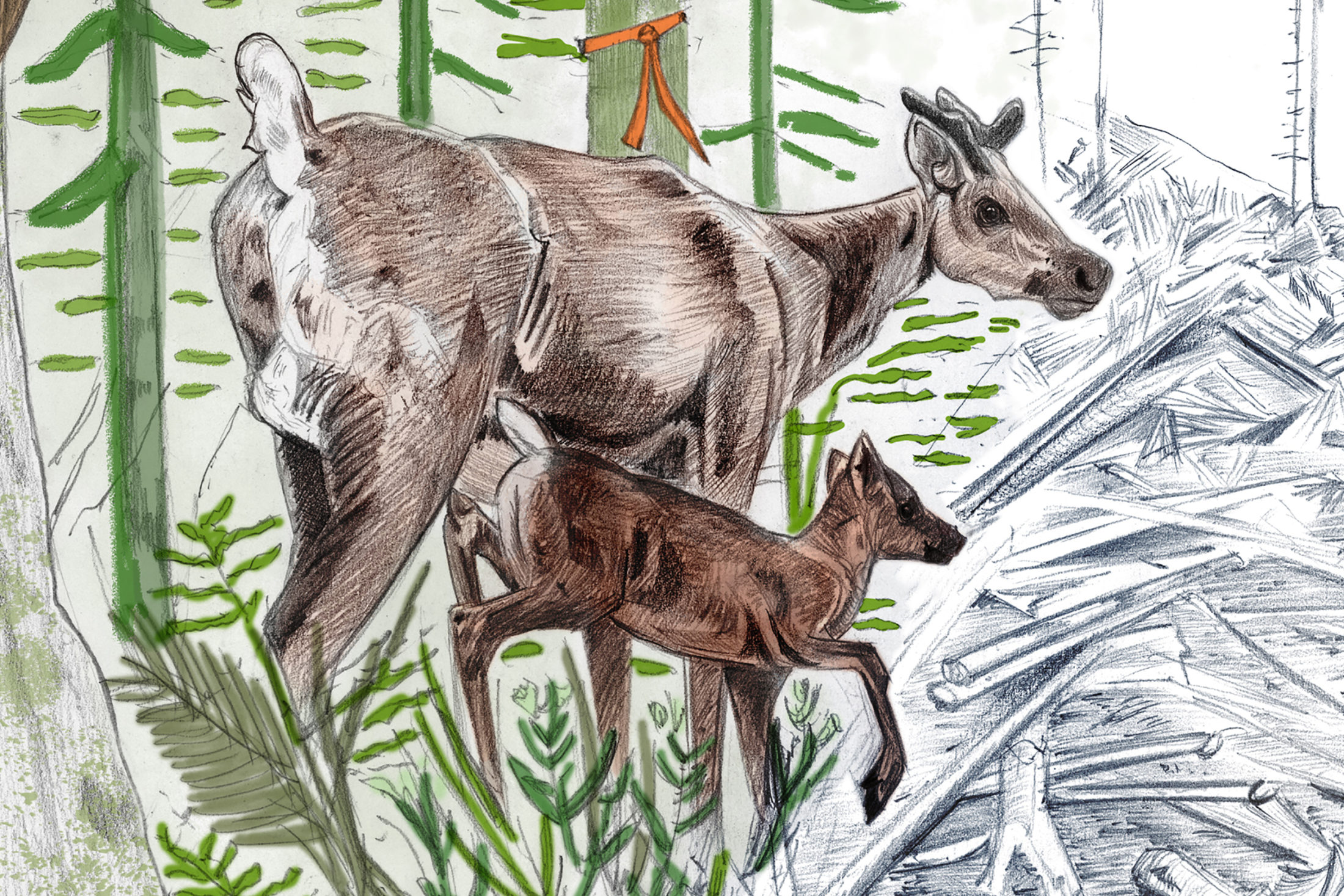
Caribou were so plentiful in B.C.’s Peace region in the 1960s that Elders from West Moberly First Nations described them as being “like bugs on the landscape.” Illustration: Sarah Hammond / The Narwhal
Today, many wild salmon populations in B.C. have collapsed. Wood bison and plains bison are in danger of local extinction. Herring populations are in peril. All 20 Victoria-area populations of Taylor’s checkerspot butterfly, which brightened grasslands with its distinct orange, black and white wing patterns, have vanished, along with many other butterfly species. Northern spotted owls, a species found only in southwestern B.C.’s old-growth forests, recently became functionally extinct.
B.C.’s southern mountain caribou herds are snuffing out like candles. Two more herds were declared functionally extinct last year and a dozen herds each have less than 25 animals remaining. The Burnt Pine caribou herd in the Peace is locally extinct, and the six other herds in the region are critically endangered. At last count, in 2016, only 121 caribou remained in the once mighty Wells Gray south herd, which today is one of the largest southern mountain caribou herds left in the province.
These species are but a handful of the red and blue-listed fish, birds, mammals, plants, amphibians and insects on the B.C. Conservation Data Centre’s species and ecosystems explorer. You can spend hours scrolling through the database’s 22,098 species and ecological communities, which are named for the dominant species in a unique combination. The ecological communities have names like coastal strawberry-beach bluegrass-bent-leaf moss, a newly described community, found on Rose Spit in the Haida Gwaii archipelago, that also includes the seashore lupine, seacoast angelica and rice-root fritillary.
If you click on the red and blue lists, you’ll see 718 plant species. They range from the three-forked mugwort, corrupt spleenwort and least bladdery milk-vetch to the dulcet tones of the alpine anemone, scarlet ammannia and sweet-flowered fairy-candelabra.
Check the lists for amphibians, and up pop the blotched tiger salamander, the wandering salamander and the northern leopard frog, along with five other small vertebrate species that need water to survive and are in some measure of trouble. Wondering where all the butterflies went? There are 85 butterfly species at risk of extinction in the province, bearing names like Arctic blue and immaculate green hairstreak. And what about insects, given reports of a global insect apocalypse? There are 137 insect species that could wink out in B.C., including eight bee species. The rare dwarf spruce tarantula, found nowhere else but in the Carmanah and Walbran valleys, is also believed to be at risk of extinction. But not enough is known about it, so it remains unlisted.
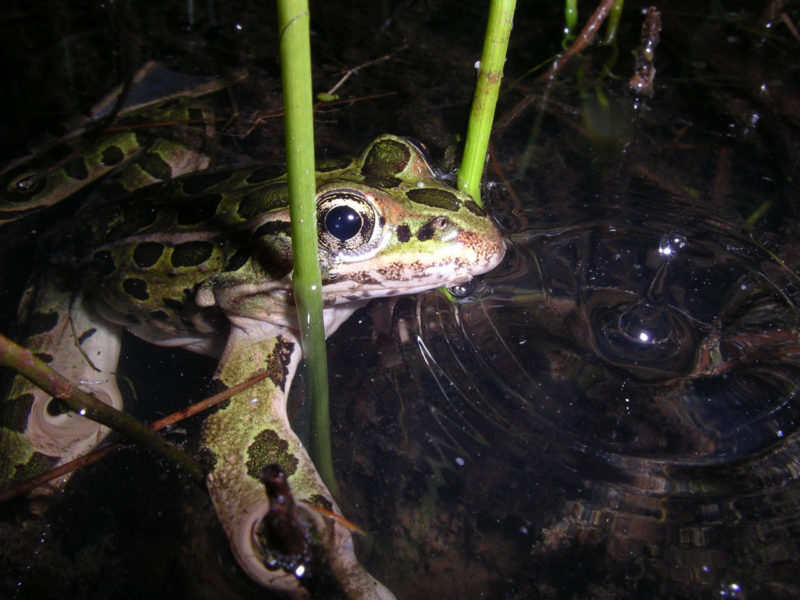
The northern leopard frog is named for the dark spots on its legs and back. It was once North America’s most widespread and abundant frog species. Massive declines began in the 1970s and the northern leopard frog is now at risk of extinction in B.C. Photo: Andre Beaucher
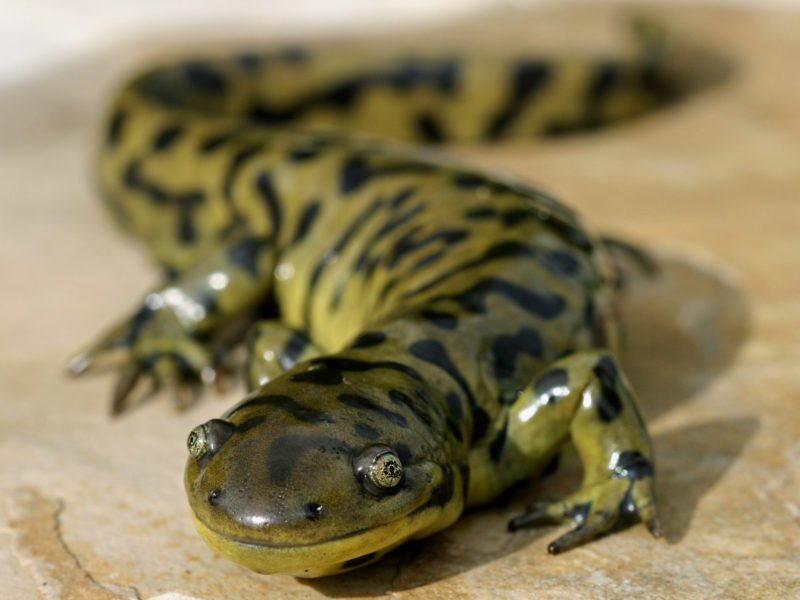
The blotched tiger salamander is one of the largest terrestrial salamanders in North America, growing to up to 30 centimetres in length. Found in the southern mountain region of B.C., the blotched tiger salamander is at risk of disappearing from the province. Photo: Shutterstock
Like to fish? There are 52 fish species vulnerable to extinction in the province, including bull trout and white sturgeon. And what about birds, which so many more people are watching as the COVID-19 pandemic keeps them at home and muffles city noise? There are 103 bird species on B.C.’s red and blue lists, including the country’s namesake Canada warbler, a boreal songbird with a bright yellow neck and body that is experiencing significant declines from activities that include mining, logging and hydro dam-building.
Even a super-sized Noah’s Ark would be hard-pressed to squeeze in a pair of each of the 68 mammal species at risk of extinction in B.C. Listed alphabetically, by their scientific names, they begin with animals like wood bison, plains bison, Roosevelt elk and sea otter and move down the letters to include, somewhere in the middle of the alphabet, bighorn sheep, Dall’s sheep and Stone’s sheep. Bookmarked near the far end of the letters are American badger (taxidea taxus) and grizzly bear (ursus arctus).
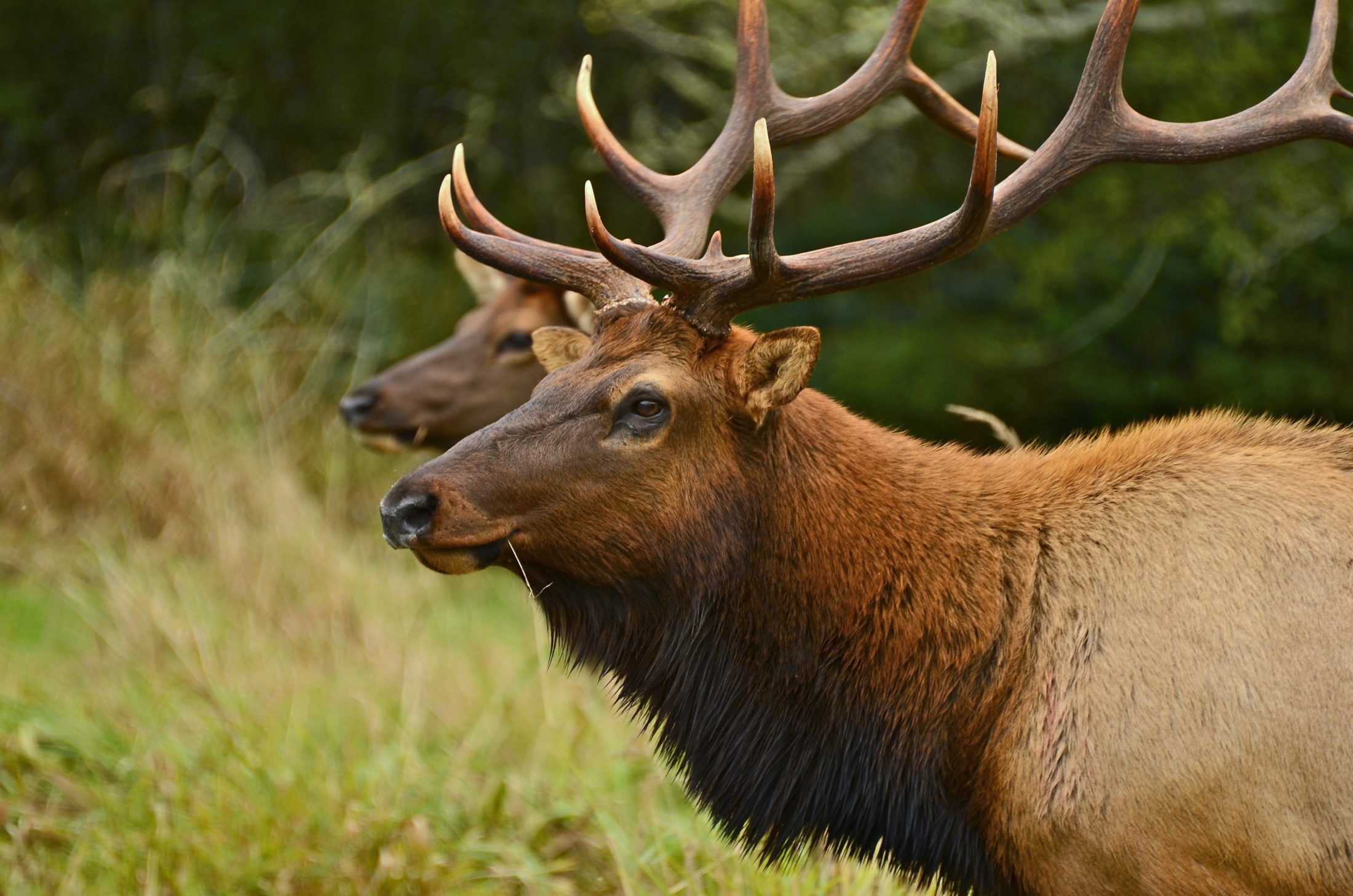
Roosevelt elk were once widespread in southern B.C. But development has greatly curtailed populations on mainland B.C. Most of B.C.’s remaining Roosevelt elk population is found on Vancouver Island. Photo: Linda Tanner / Flickr
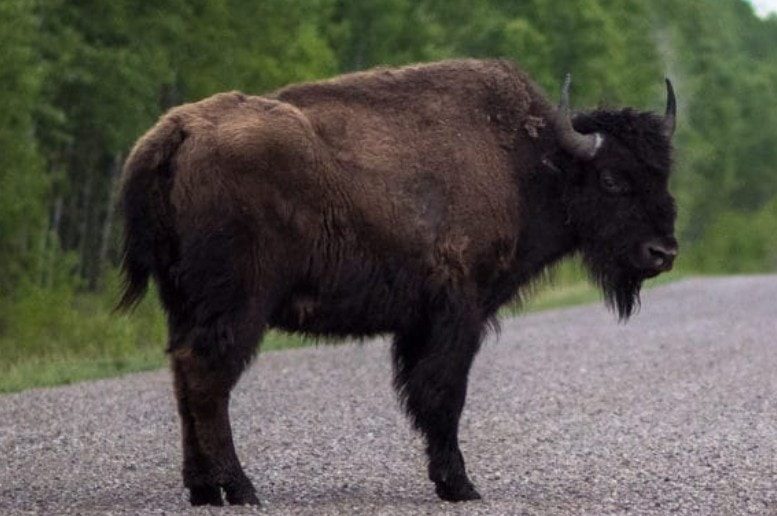
Wood bison, the largest land mammal in North America, are found in northeastern B.C., where they are at risk of extirpation. Photo: Louis Bockner / Sierra Club BC
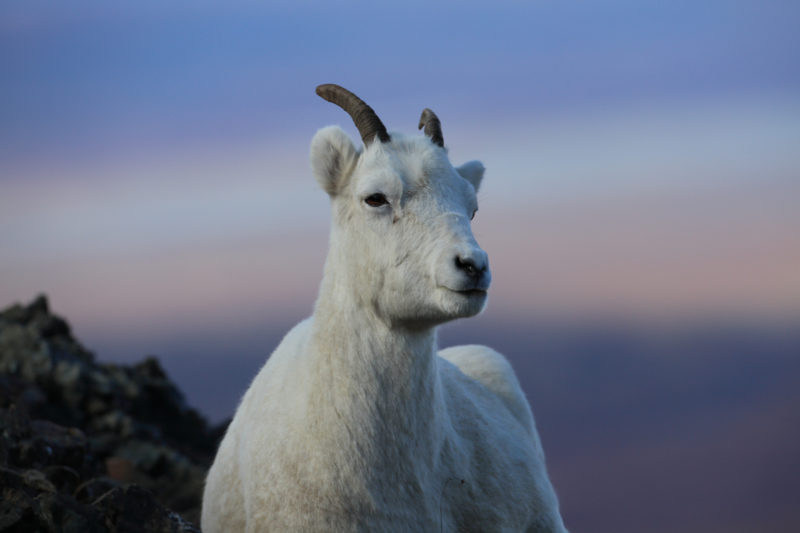
A Dall’s sheep eyes the camera. Along with Stone’s sheep and bighorn sheep, Dall’s sheep are at risk of winking out in B.C. Photo: Shutterstock
“Endangered species are by and large not protected in the province,” says UBC biologist Sally Otto, who sits on Canada’s species at risk advisory committee. “We can destroy habitat that is critically needed for species, or we can even kill those species that are endangered.”
As one example, Otto points to the B.C. government’s sanctioning of logging of white bark pine, a highly endangered tree that stabilizes steep slopes and relies on one bird species, the Clark’s Nutcracker, to naturally disperse its seeds.
“When I tell people there is not an endangered species law … they’re shocked. They are trusting the government to make sure our endangered species are protected, not realizing they aren’t.”
“When I tell people there is not an endangered species law … they’re shocked.”
In 2013, former B.C. auditor general John Doyle issued a report saying the provincial government was failing to conserve biodiversity. Doyle described biodiversity as critical to the health and well-being of British Columbians, saying “it provides the products and services that support life, including the air we breathe, the food we eat, the water we drink and many of the resources vital to our economy.”
The report listed the five major threats to biodiversity: habitat loss, invasive species, overexploitation of natural resources, pollution and disease, and human-induced climate change.
Doyle concluded that the B.C. government had failed to use its own habitat protection tools to conserve species. He pointed out that his office had identified similar issues in an audit 20 years earlier, saying he was “disappointed” about the lack of progress.
Many species and ecosystems in the province were in decline, Doyle said, as a chart in his report put the number of at-risk species at 1,525 (compared to almost 2,400 today). Some species, like the white-tailed jack rabbit, once found in the southern Okanagan in the interior, had already become extirpated, or locally extinct.
“Habitat preservation is critical to the conservation of biodiversity, and [the] government’s lack of implementation and monitoring is troubling,” Doyle wrote.
Then the auditor general took more of a carrot-like approach, as opposed to a stick. With 94 per cent of the province publicly owned or in Crown land, Doyle said the provincial government had a pivotal role to play in ensuring biodiversity was conserved “now and into the future.”
B.C. even had an opportunity to become an international leader and bolster its reputation on the world stage by ensuring that, by 2020, it had reversed the decline in biodiversity, Doyle suggested.
But his calls went unheeded.
In May 2019, as scientists around the world warned of a global biodiversity crisis, saying nature was declining at rates unprecedented in human history, Otto and 17 other scientists published a paper warning that increasing numbers of species and ecological communities in B.C. are threatened with extinction.
The scientists outlined recommendations for endangered species legislation. Such legislation, they said, should allow for an independent oversight committee to list species, help organize recovery teams and monitor progress, using Indigenous knowledge and natural and social science to prioritize actions to save species — species like the fisher — from local or global extinction.
“Until we shore up our legal obligations at the provincial [level], we basically don’t have a way to protect species at risk and their critical habitat in the way that we need to,” says Otto, a zoology professor with UBC’s Biodiversity Research Centre.
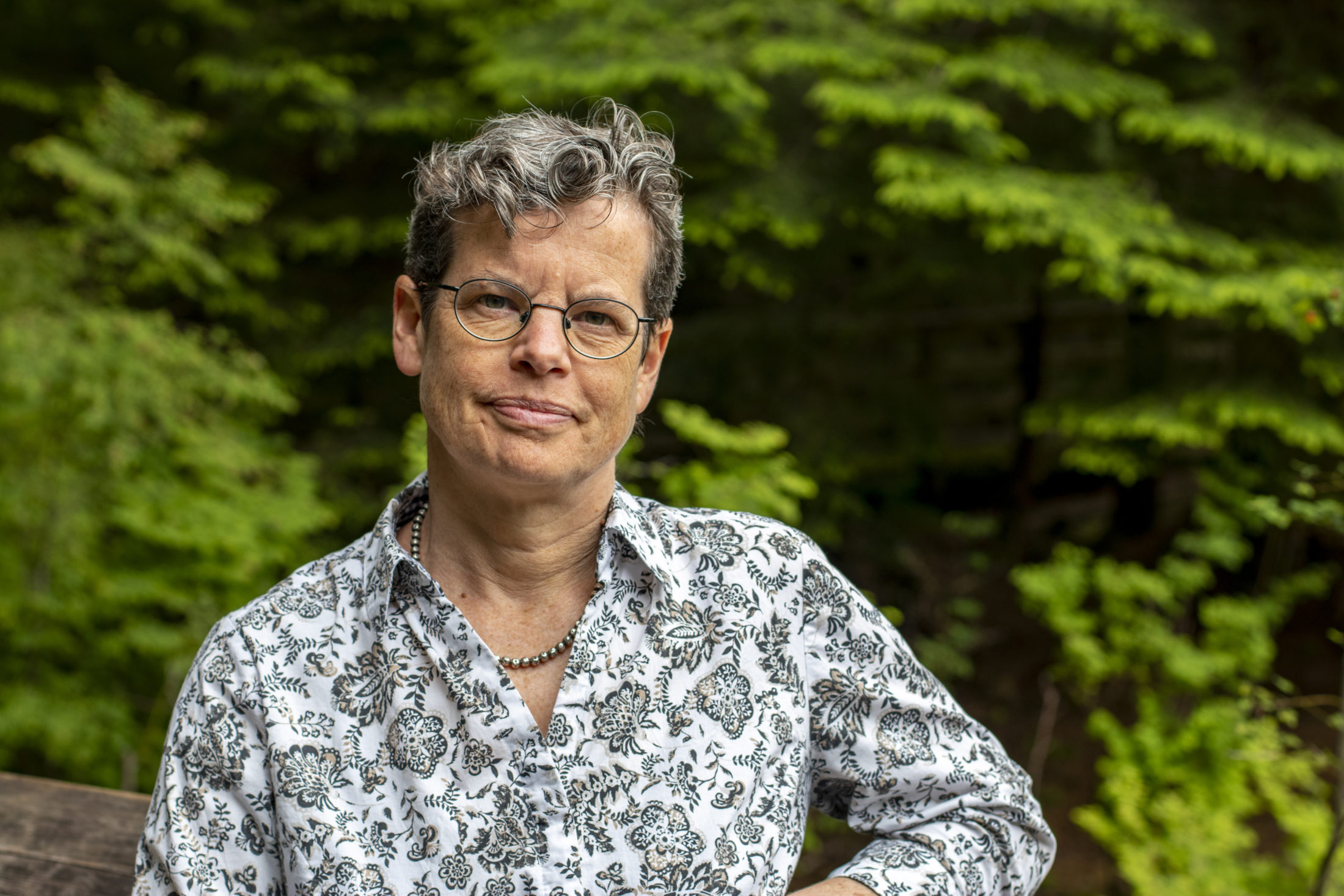
“Endangered species are by and large not protected in the province,” says UBC biologist Sally Otto, who sits on Canada’s species at risk advisory committee. Photo: Brent Craven
In the science community, the weight of one threat to a species piled atop other threats is known as “cumulative impacts.” Otto describes cumulative impacts as akin to not paying attention to individual purchases you make on your Visa card.
“You just go ‘oh this is only $5 and I’m going to buy that, and this is only $50 and I’m going to buy that,’ and you pay zero attention to the sum total on your credit card,” she says. “Well, obviously, that’s how you run into credit card debt.”
In the case of the fisher, that credit card debt is outlined in a new B.C. government conservation status report detailing factors responsible for the mustelid’s decline. Industrial logging is a primary factor. The mountain pine beetle epidemic, which exacerbated the loss of forest habitat, is another.
It’s not just denning trees the fisher needs, but resting trees like spruce, where it hides in witches’ broom. Fisher also use tree cavities to sleep, escape from cold weather and eat prey, which includes squirrel, vole, shrew, snake, snowshoe hare and grouse.
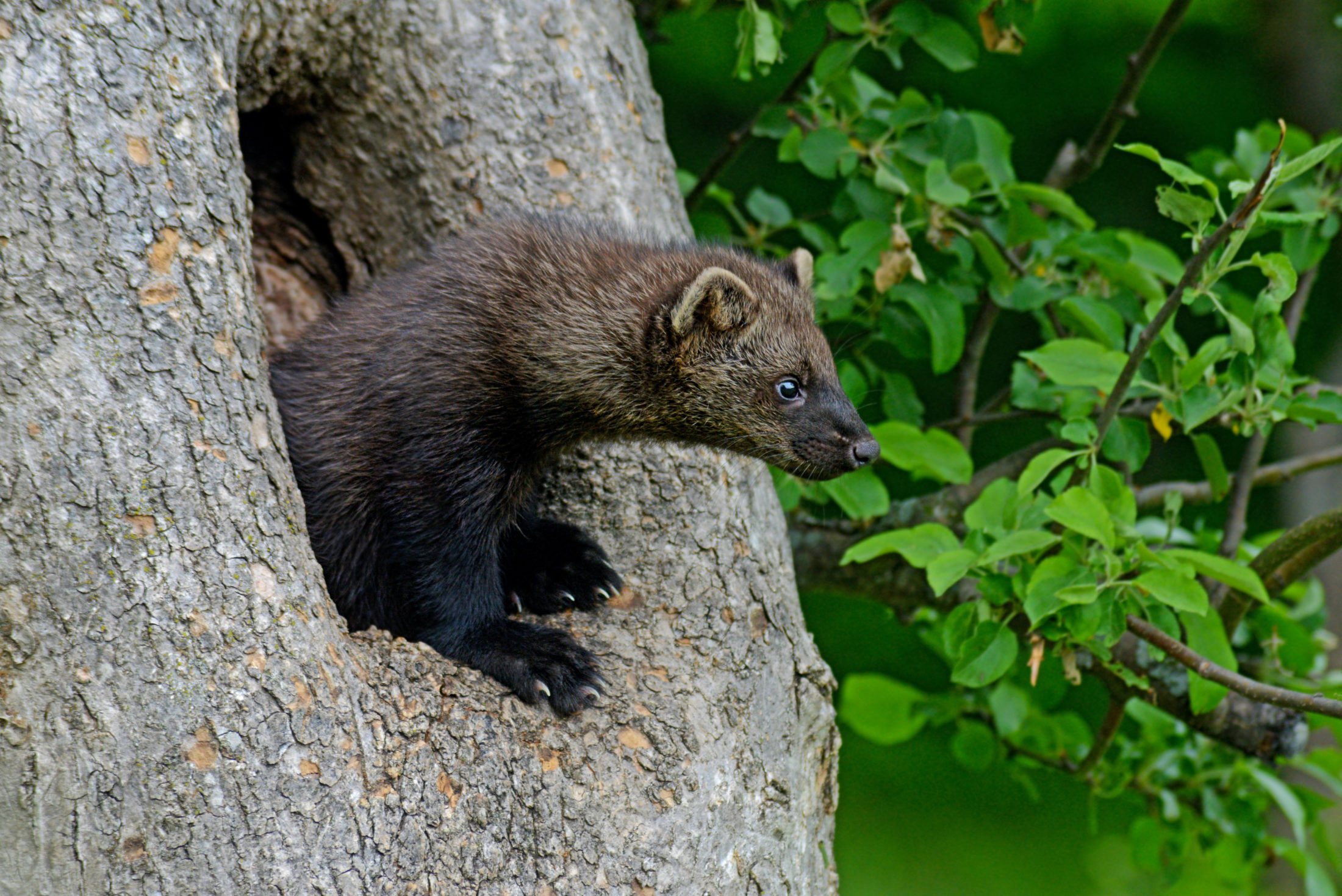
Fisher use tree cavities to nest, den, sleep and escape from cold weather and predators. There are only five species of tree in B.C. that meet the requirements for a fisher den. Photo: Shutterstock
“When the mountain pine beetle hit and they started getting the wood for next to nothing, that’s when they just started hammering it,” Wayne, the trapper, says. “They don’t leave wildlife corridors, [there are] no strips of timber. And if they do leave any, next to a little creek, it’s so little that the first wind comes along and blows it down.”
Over-trapping is another factor in some areas, with access made all the easier by logging. Hydro-electric development — such as the Site C dam, which will flood the riparian zone along the Peace River where boreal fisher den — is also cited as a reason for fisher decline. Agriculture and other land uses that destroy forest habitat, along with the widespread use of poisons for harvesting and predator control, are less significant factors.
All that credit card debt adds up to biodiversity debt. One project at a time is evaluated and decision-makers say, “oh, that’s not going to have much of an impact, it’s only $5, it’s only affecting this teeny little area,” Otto says. “But when we do that over and over again the sum total is putting us into debt.”
Eventually, biodiversity debt becomes extinction debt. Extinction debt, Otto says, is like knowing somebody who is so sick they’re almost certainly going to die.
“They’ve got stage four cancer, there’s no treatment possible. They’re still alive, but it’s very, very hard to turn those cases around. We have a lot of that in British Columbia, where the populations haven’t yet slipped out, but they’re too small and too fragmented to prosper.”
“They’ve got stage four cancer, there’s no treatment possible. They’re still alive, but it’s very, very hard to turn those cases around.”
Take the endangered plants that biologist Brian Starzomski has devoted much of his career to studying. Many of these plants, I’m surprised to learn, are found near the ocean within several kilometres of my home in Victoria, which lies in the rain shadow of Washington State’s snow-tipped Olympic Mountains, giving the city a climate more on par with California than with, for example, North Vancouver, which receives more than two times the rainfall.
On an early morning in May, as the sun slants through low cloud cover, I meet Starzomski at Victoria’s Harling Point beside the historic Chinese cemetery, a patchy area with tall grass and small unmarked grave stones, some leaning away from the windswept shore.
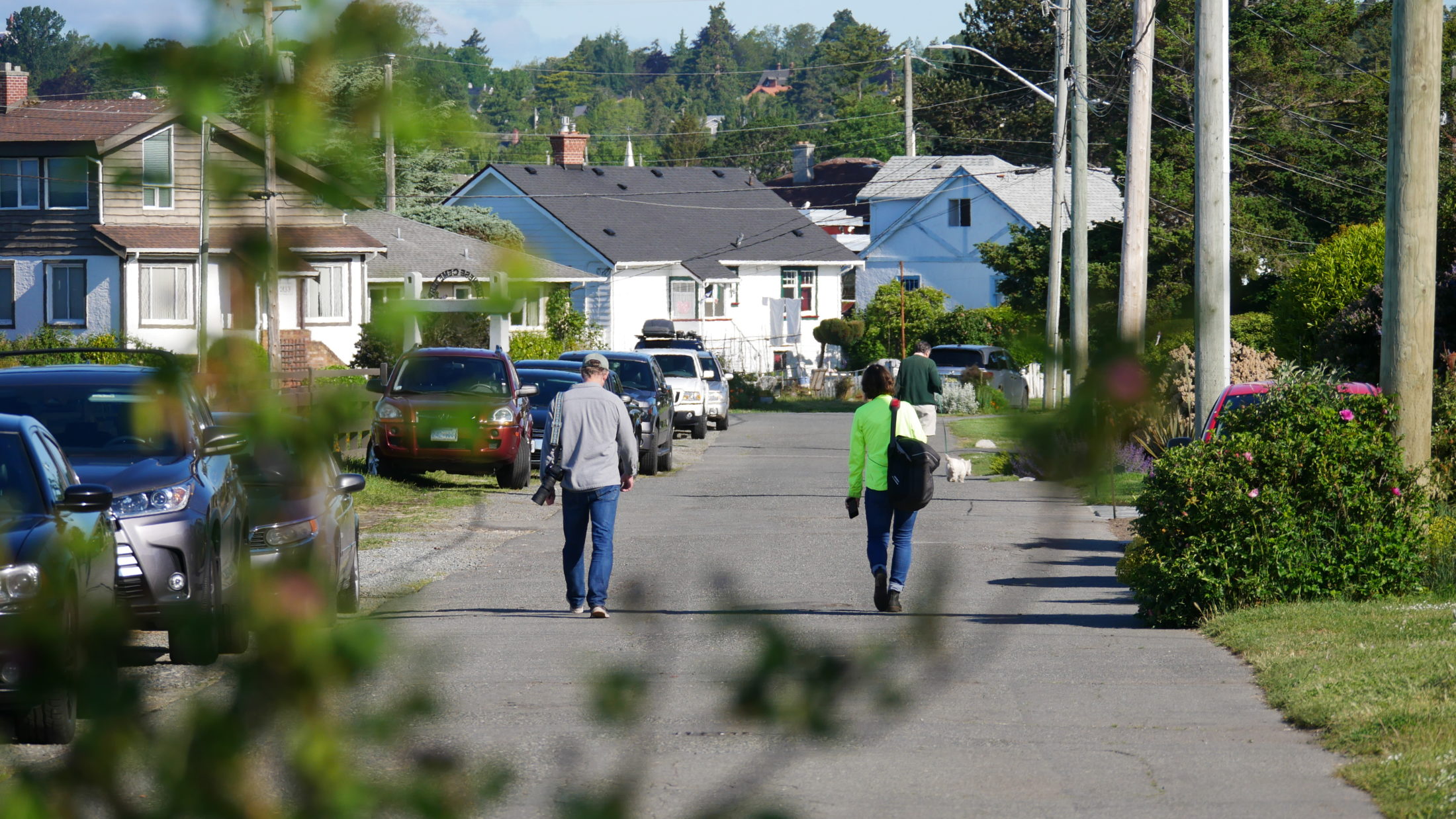
Brian Starzomski and reporter Sarah Cox stroll through a Victoria neighbourhood, en route to viewing rare plants. Photo: Carol Linnitt / The Narwhal
Just offshore lies the rocky squiggle of the Trial Islands, an ecological reserve with a lighthouse and four large radio antennae. The small islands, closed to visitors, are thought to have the highest density of endangered species found anywhere in Canada. That puts them on par with the Point Pelee area, the southernmost tip of mainland Canada, which juts into Lake Erie.
Point Pelee specializes in migrating birds, also protecting a sliver of what remains of southern Ontario’s original habitats. The Trial Islands showcase rare plants, including a highly endangered golden paintbrush that no longer grows around the cemetery and, most likely, according to Starzomski, nowhere else in Canada.
Along a narrow strip of land between the cemetery’s corral-style wooden fence and the ocean — a place the size of a couple of neighbourhood coffee shops — Starzomski falls to his hands and knees, pointing to the ground.
“This is it for remaining habitat for a lot of rare plants in Canada,” he says. “It looks like this.”
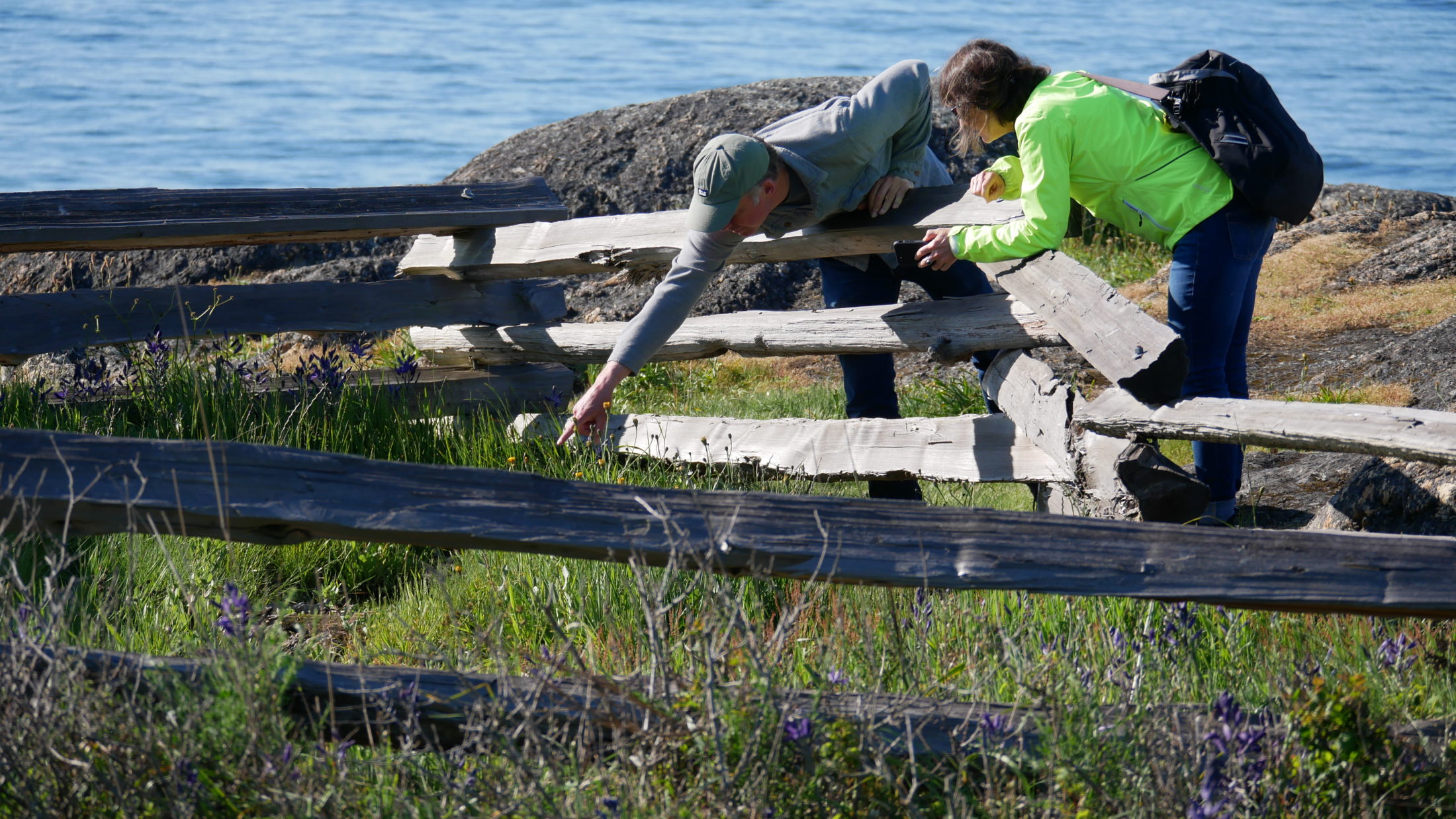
This corralled off area in Victoria protects rare plants. “This is it for remaining habitat for a lot of rare plants in Canada,” Starzomski says of the area. “It looks like this.” Photo: Carol Linnitt / The Narwhal
Small, indistinct plants cling to sea-washed rocky crevices, while others find purchase in and around vernal pools, the ephemeral ponds of water that appear each spring. For Starzomski, these uncommon plants are much more bedazzling than the giant rhododendron blooms that colour the streets of Victoria this time of year. These are not charismatic megafauna, like the endangered orca pods sometimes spotted from this tranquil outcrop. It’s a world of mini-flora whose hidden charms are only unveiled as Starzomski points to plants I’ve no doubt stepped on during previous visits to the shore.
There’s the rare bear’s-foot sanicle, also known as footsteps of spring, whose leaves mimic the pattern left by a bear’s steady footprints. Its showy, bright yellow flowers hug the ground. The Scouler’s popcornflower — whose teeny white flowers appear as spilled popcorn in that Lilliputian world, is the more common relative of the slender popcornflower, which has been extirpated from Victoria, persisting only in a small number of poorly known populations near the city and on a few southern Gulf Islands. One remaining population, with a few hundred plants, occurs on a Saturna Island hillside, where it is carefully tracked by Parks Canada.
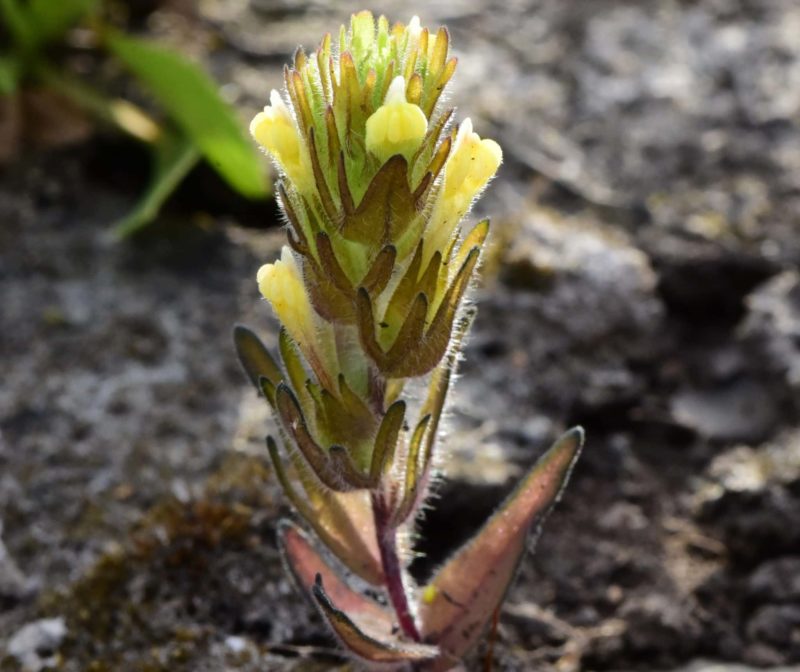
Victoria’s owl-clover, an endangered plant that grows in Garry Oak ecosystems, which are themselves at risk of extinction. Photo: Brian Starzomski
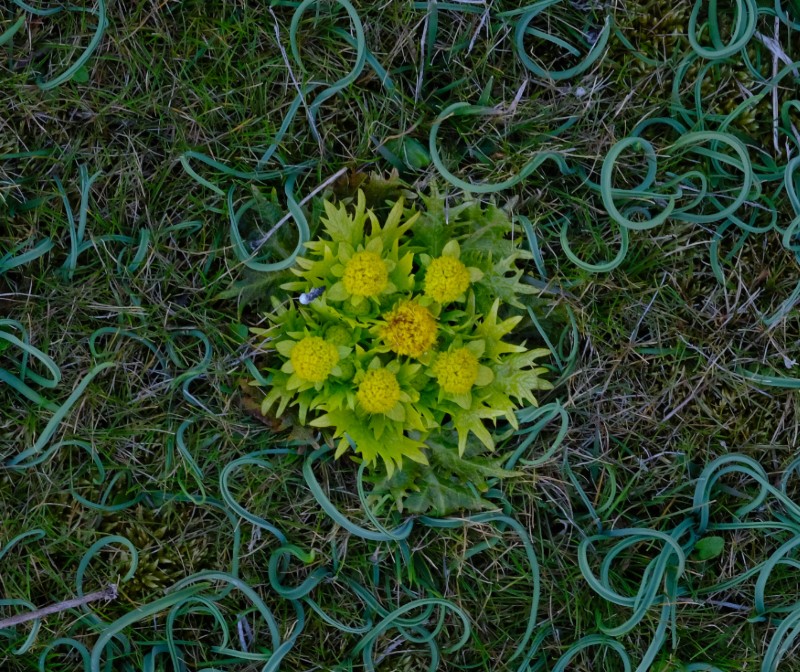
The leaves of a bear’s-foot sanicle mimic the pattern left by a bear’s footprints. Photo: Brian Starzomski
Macoun’s meadow-foam, whose diminutive white petals herald the start of spring, has finished blooming for the year. And just about the rarest of them all is Victoria’s owl-clover, a plant that comes up “like a little pop can,” says Starzomski, with lemony flowers sprouting at the end of stalks, somewhat like a desert cactus in bloom. “It’s unlike anything else you’ll see anywhere. It just doesn’t look like any garden plant that you know of. It’s beautiful and weird.”
Victoria’s owl clover grows in a few spots around its namesake city and in one location in Washington state’s nearby San Juan Islands. It’s found nowhere else in the world. The plant is “right on the edge,” of extinction, Starzomski says. There might be several thousand individuals left, he grants, but they’re found in an area smaller than 10 high school classrooms — an area that is shrinking all the time.
“Here we are in Victoria, B.C., one of the most beautiful places in the world,” Starzomski says. “And the vast majority of British Columbians are interested in the environment. We’re concerned about big trees and orcas and caribou. This is a species that’s just as important and interesting and it’s in our backyard. Yet we have a hard time finding the will to save it.”
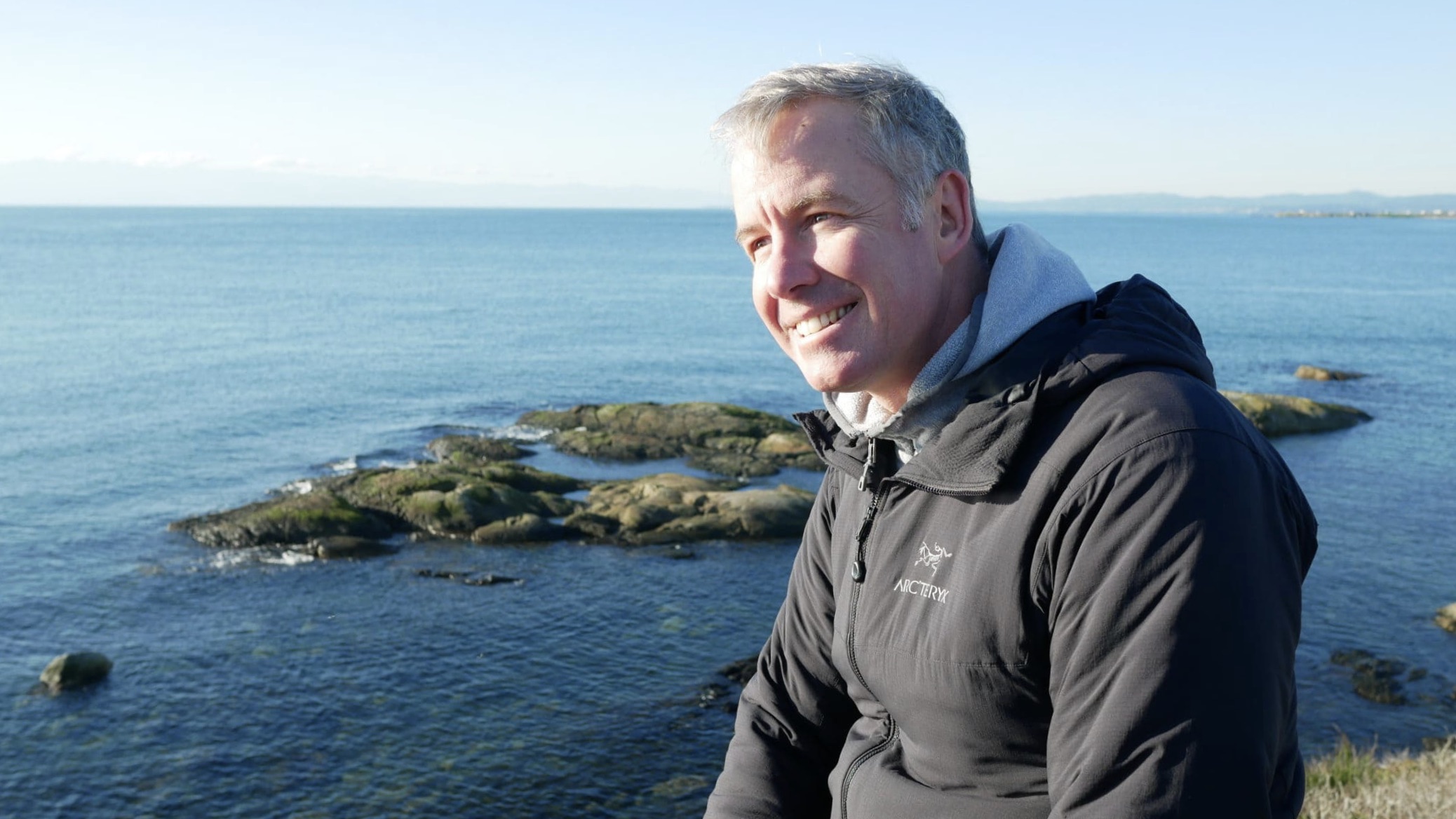
University of Victoria biologist Brian Starzomski at Harling Point in Victoria, B.C. The point is home to some of Canada’s most endangered plant species. Photo: Carol Linnitt / The Narwhal
Prior to colonization, Victoria’s owl-clover and the other highly endangered plants along the shore flourished in the Garry Oak ecosystem that dominated the southern tip of the Saanich Peninsula. A famous map, drawn in 1842, shows open oak savannah blanketing much of what is now Victoria.
Today, as little as three per cent of the Garry Oak ecosystem remains. The rest has been destroyed, degraded, damaged, paved over, plowed under or otherwise turned into urban and suburban Vancouver Island. Garry Oak habitats themselves — with trees soundly anchored in deep soils where they grow spaced apart, unlike the thick oak forests of eastern North America — are red-listed, to Starzomski’s abiding concern.
“In the spring, in April and early May, it’s just glorious purple and blue underneath filled with camas that would have historically been harvested and managed by the First Peoples of the peninsula,” he says. “[A Garry Oak ecosystem] has the most amazing wildflower show of anywhere in the country in the spring. It’s just simply probably the most beautiful and one of the most biodiverse places we’ve got in all of Canada.”
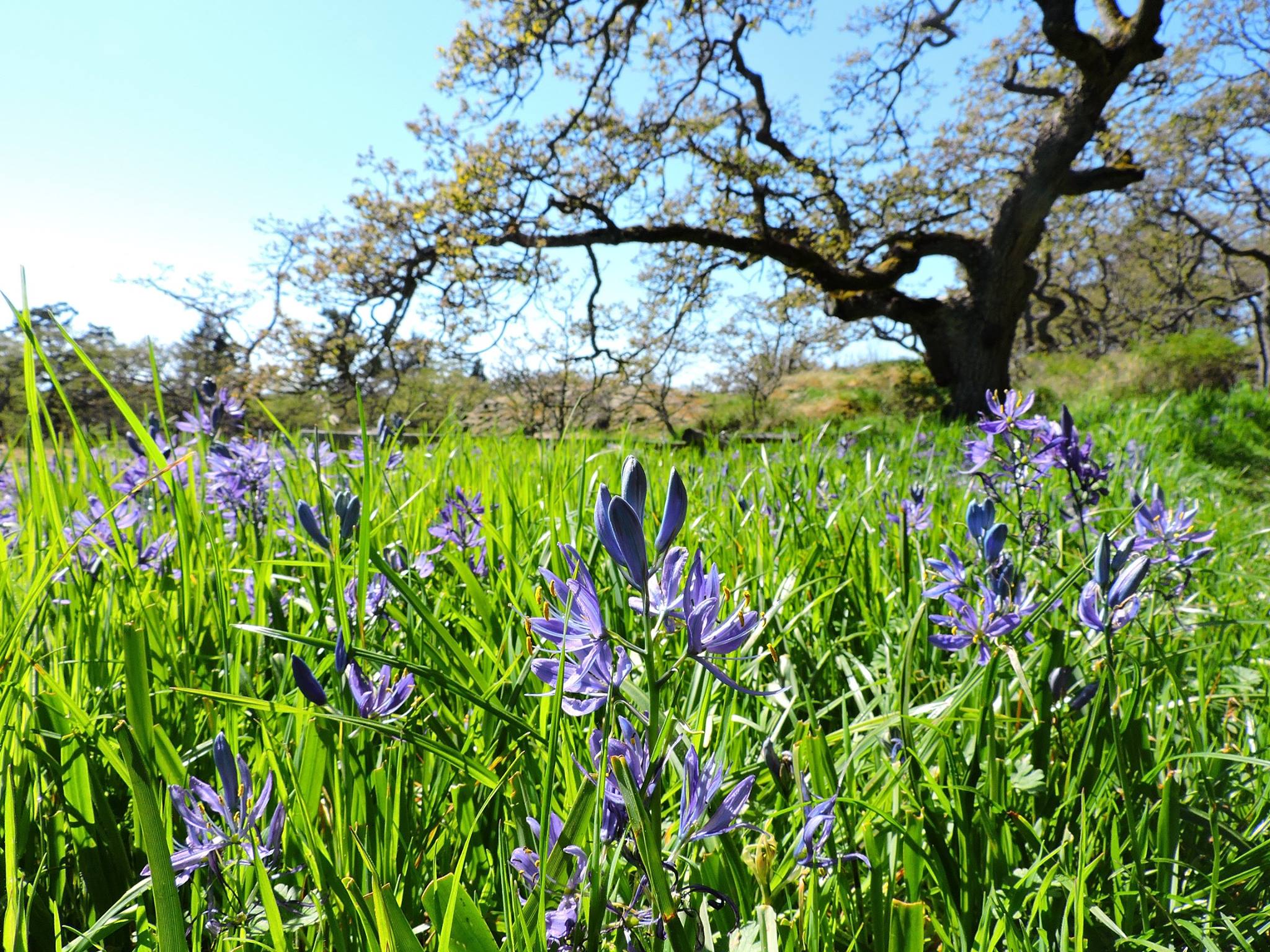
Camas flowers bloom in an increasingly rare Garry oak meadow. Photo: Alanah Nasadyk / Flickr
As we talk, the sound of hammering rings out from the residential area that circles the cemetery, where a new house is under construction. The south Vancouver Island population is set to jump by about 90,000 people within two decades. Without rapid protection for these rare plants, Starzomski says they will soon vanish.
“We’re destroying habitat really fast,” he says. “We need a species at risk act for those species that are most at risk. Without a specific act to manage them, they are going to be extirpated in B.C. or go extinct.”
The federal Species at Risk Act, commonly known by its acronym SARA, only covers land that is within federal jurisdiction. In B.C., that’s only about one per cent of the land base, including the nine-hectare ecological reserve across from us on Trial Island.
The federal act rarely helps at-risk species because provinces wield control over land-use decisions, says Andrea Olive, an associate professor of political science and geography at the University of Toronto who studies endangered species laws.
The federal government decides if species should be red or blue listed federally, and it can map critical habitat for species such as the Victoria owl-clover or caribou.
“If those species wander into a national park, or if they wander into a post office or a military base then the government can protect them,” Olive says. “But so long as they’re on provincial land or private land, there’s nothing the federal government can do.”
“So the provinces have to step up. They simply have to. And they’re refusing to.”
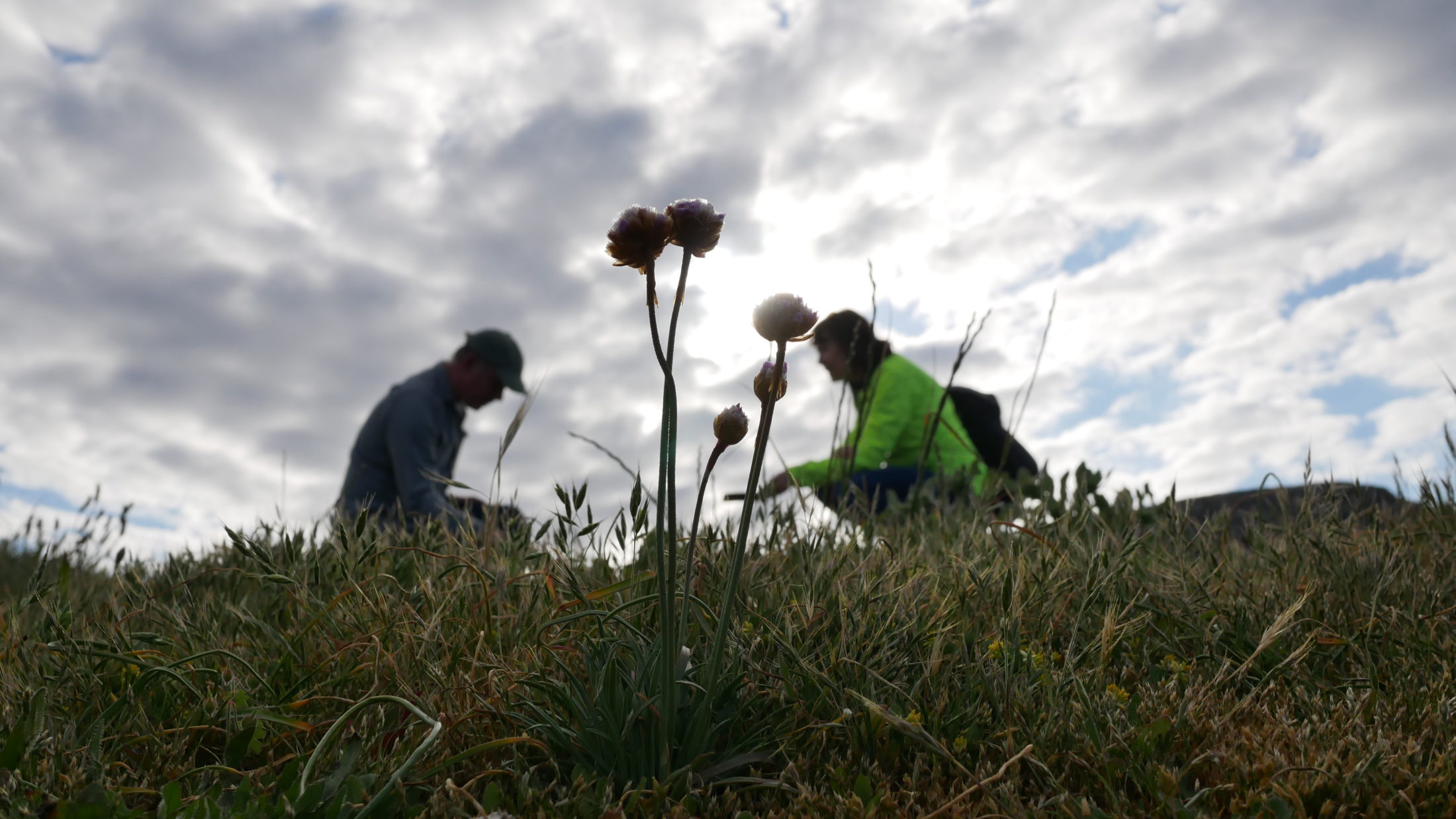
If endangered species are on federal land, they can be protected under federal laws. But species on provincial or private land currently have no over-arching legal protection in B.C. Photo: Carol Linnitt / The Narwhal
Even the six provinces that have passed endangered species legislation frequently make exceptions for industry, Olive points out. Ontario’s endangered species law, for example, excludes all hydro, oil and gas, and wind energy development, a testament to the influence of industry and the light weight that protecting biodiversity is accorded on the scales of decision-making.
But despite the limitations of existing provincial endangered species legislation, Olive believes it is important for B.C. and the other laggard provinces (Alberta, Saskatchewan and PEI) to enact laws to save at-risk species.
“At the end of the day, you need to be able to hold the government responsible. I also think a law signals to the public that we take it seriously.”
In the U.S., the toothy Endangered Species Act, passed in 1973, protects all species across the country regardless of who wields jurisdiction over the land — governments, corporations or private landowners.
“It applies to all land, everywhere, at all times, the same way,” Olive explains. “They have one agency that’s given the mandate to enforce that law.”
“At the end of the day, you need to be able to hold the government responsible.”
The U.S. law, perhaps not surprisingly given its scope, has reaped success stories for a large number of endangered species. By 2012, 110 species had seen “tremendous” recovery under the act, according to the U.S. Centre for Biological Diversity. They include the black footed ferret, whooping crane, short-nosed sturgeon, American crocodile, California condor, Atlantic green sea turtle and El Segundo blue butterfly.
“When your law recovers the American eagle, that’s going to win over the public,” Olive notes.
Unlike Canada’s Species at Risk Act, the U.S. law puts the welfare of endangered species above other interests, including industrial interests. In the case of the spotted owl, for instance, the law compelled logging to be curtailed in the owl’s critical habitat in Pacific northwest forests.
The B.C. government, in sharp contrast, recently approved 312 new logging cut blocks in the range of the spotted owl, including in the Fraser Valley where biologists sighted the last three individuals thought to be left in Canada’s wild.
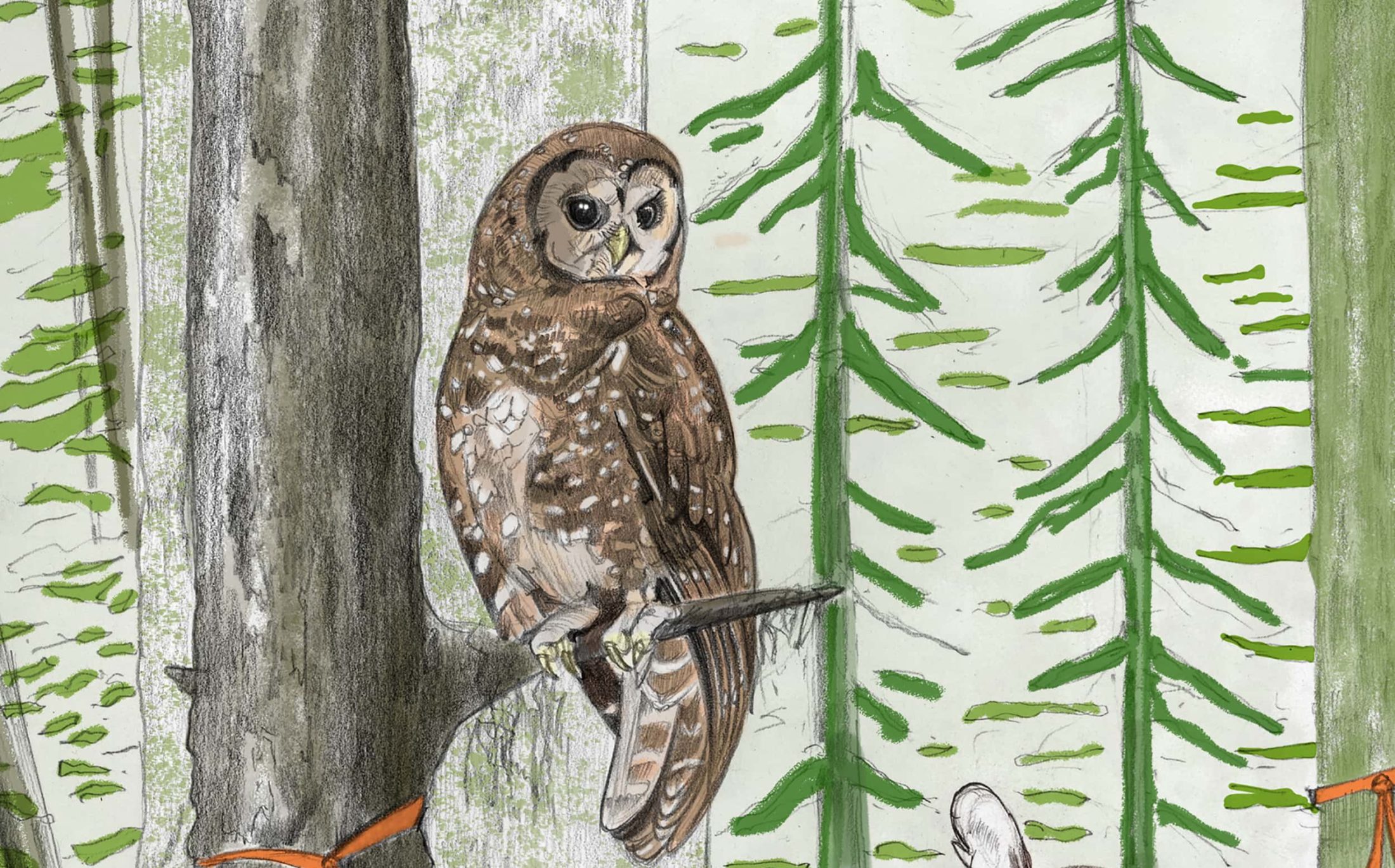
The B.C. government continues to issue logging licences in the habitat of endangered spotted owls. Illustration: Sarah Hammond / The Narwhal
Starzomski says an endangered species act would offer tools that could help protect the critically endangered plants at Harling Point. Those tools could be as simple as a few enclosures and signs that inform people about the plants and caution against stepping on them. Legislation could also furnish funding to remove highly invasive species like scotch broom, the bane of B.C.’s coastal native plant species, which creeps ever closer along hillsides.
Two small enclosures — about the size of several desks side by side — already mark vernal pools at Harling Point. But, in many years, Victoria’s owl-clover grows outside the enclosures. Dogs, which carry seeds from invasive species in their paws, can easily duck through the rails, as can small children who want to splash in the pooled water.
Without a B.C. endangered species act, Starzomski says the prognosis is poor for the rarest species on southern Vancouver Island and in the south Okanagan, another epicentre for development. He gestures to a tiny patch of bear’s foot sanicle clinging to rocks near the ocean.
“Just as soon as these rocks go, it’s going to take all of them with it. It’s not that it’s bad habitat. It’s just that there’s nowhere else for it to go.”
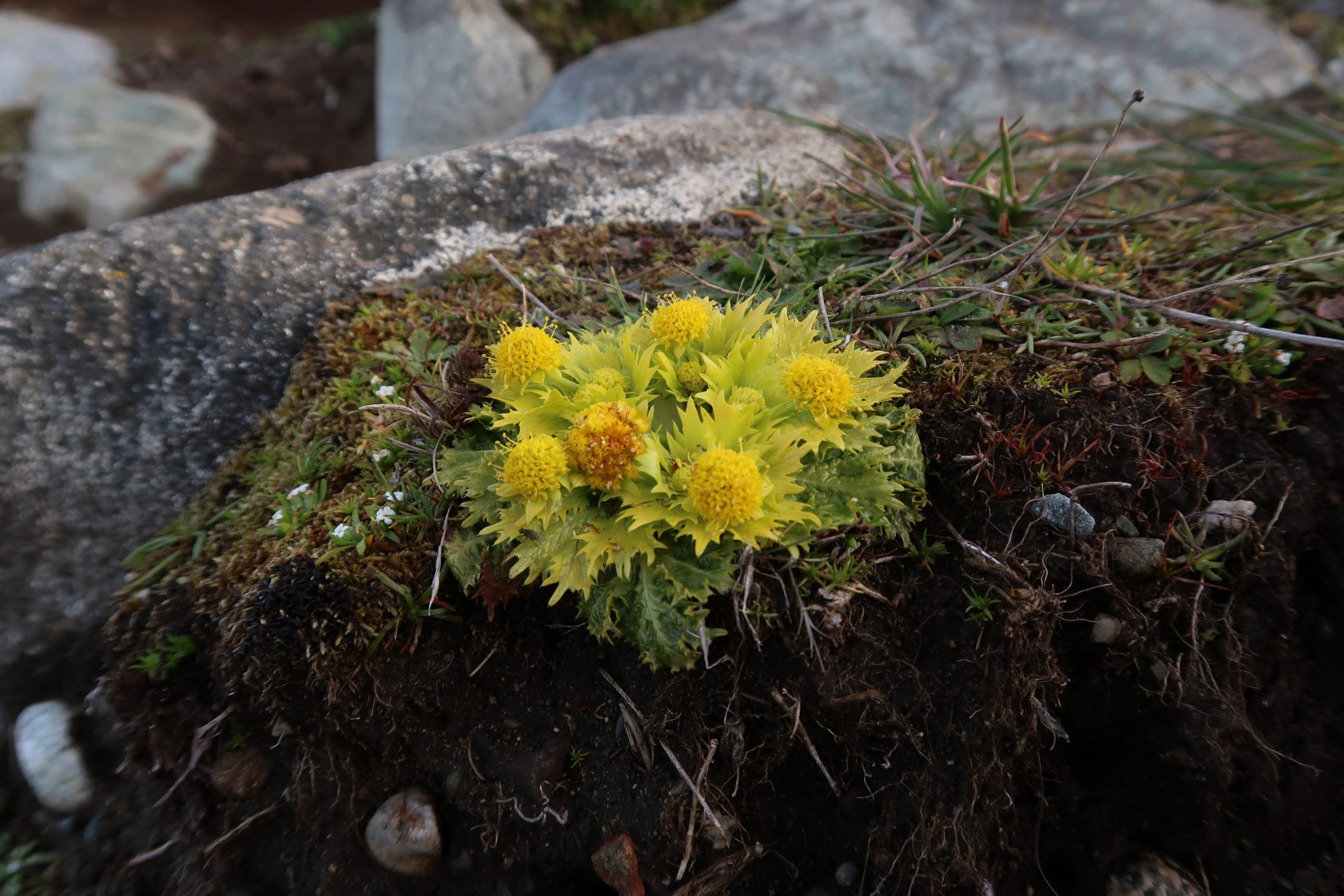
The rare bear’s-foot sanicle clings to a rock in Victoria. Photo: Brian Starzomski
The Dawson’s caribou is another species that had nowhere else to go. Found only in Haida Gwaii, an archipelago off B.C.’s north coast, Dawson’s caribou vanished quietly in the 1930s, likely due to over-hunting and insufficient habitat.
The remains of the Dawson’s caribou are housed at the Royal BC Museum, a concrete slab of a building in Victoria’s inner harbour with a catacomb of natural history collection storage rooms and neatly labelled shelves, drawers and vaults that hold biological treasures of immeasurable research value: giant jars of strange sea creatures and pinned collections of rare butterflies and bumblebees among them. In a dusty back room, stuffed stone sheep, caribou, mountain goats, grizzly bears, beavers and porcupines are wedged between wheeled displays of antlers and slightly odoriferous whale vertebrae.
Birds and mammals collections manager Lesley Kennes pulls four Dawson caribou antlers from their latest resting place, in a metal cupboard labelled ‘horse pelvis,’ where she has stored them for my visit. The antlers look like burnished wood, with slender tines. Around each is wound a string attached to a packing label with hand-written lettering.
“Rangifer tarandus Dawson,” says the label on the heftiest antler, which belongs to a male and comes with a piece of skull. In capital letters, the label also says ‘type,’ meaning that the specimen acts as a name bearer for the species. It gives the location where it was found: Graham Island, near Masset, on what were called the Queen Charlotte Islands when the specimen was brought to the museum in 1882.
The last of the antlers arrived at the museum in 1912, Kennes says, pulling out a weathered hardcover log book with hand-written entries in precise penmanship. “What you’re looking at is a population that was isolated,” she says.
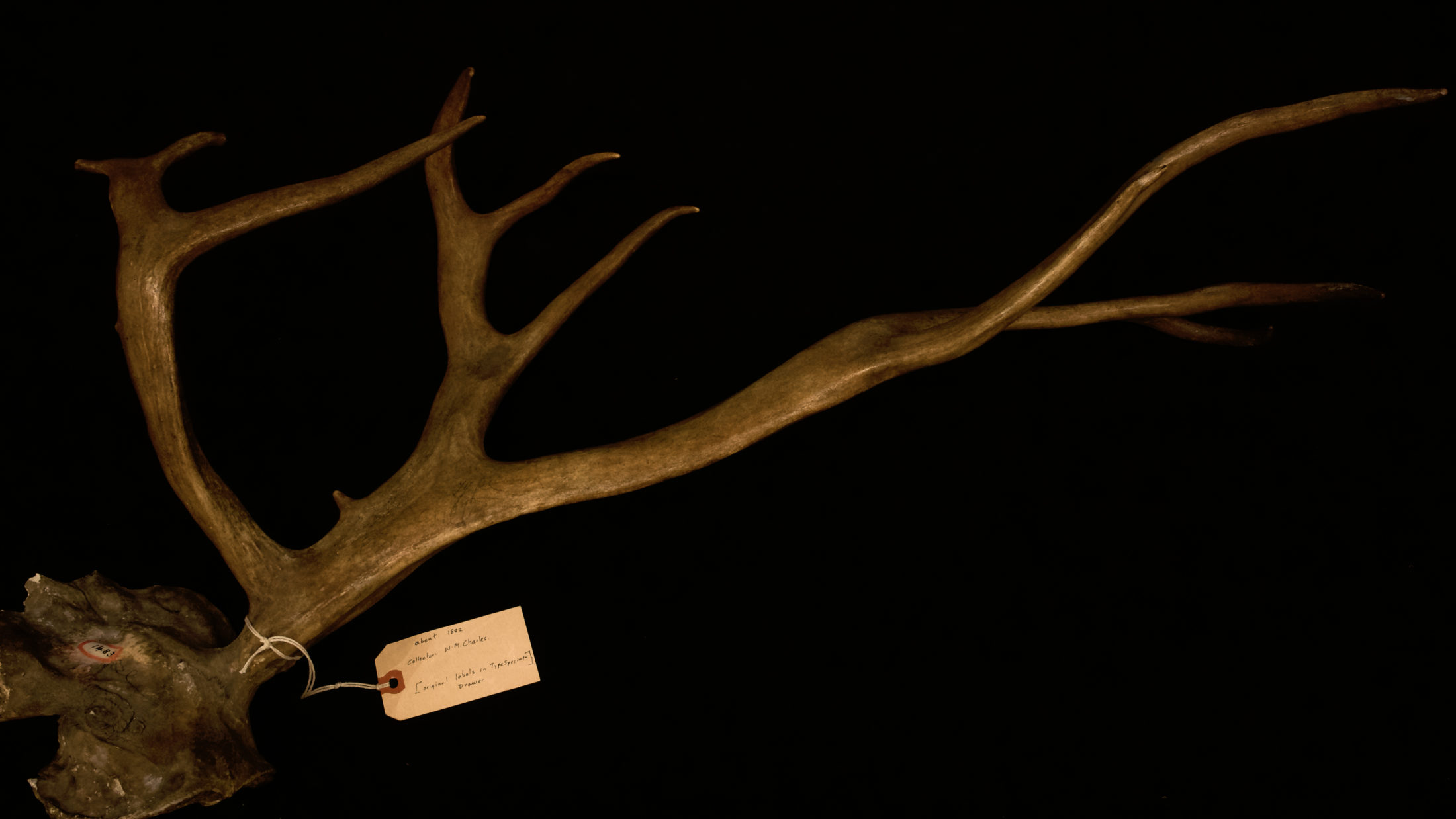
The antlers from a member of the now-extirpated Dawson’s caribou, collected around the year 1882 and stored at the Royal BC Museum. Photo: Carol Linnitt / The Narwhal
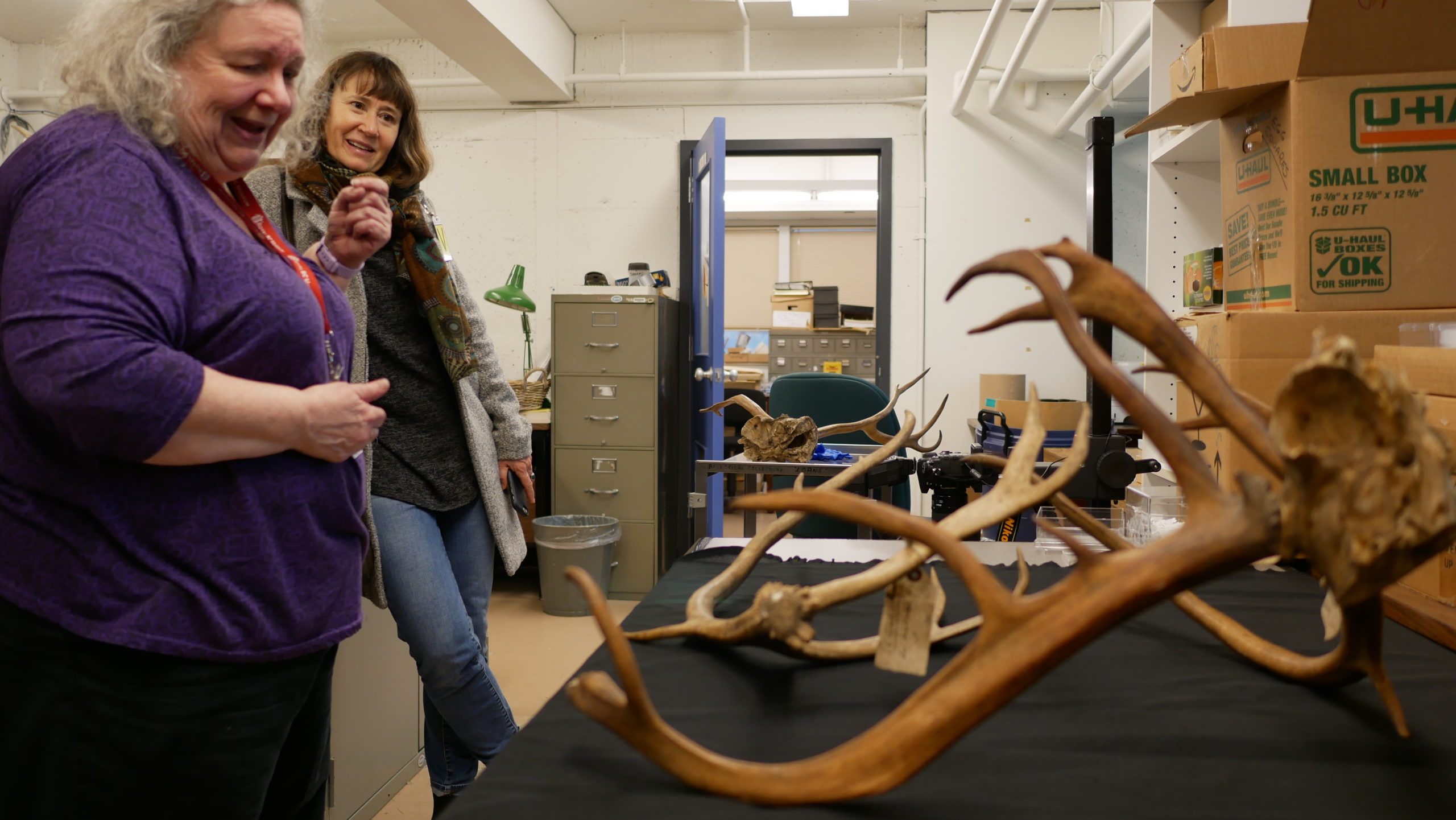
Lesley Kennes, birds and mammals collections manager at the Royal BC Museum, displays a collection of Dawson’s caribou antlers. Photo: Carol Linnitt / The Narwhal
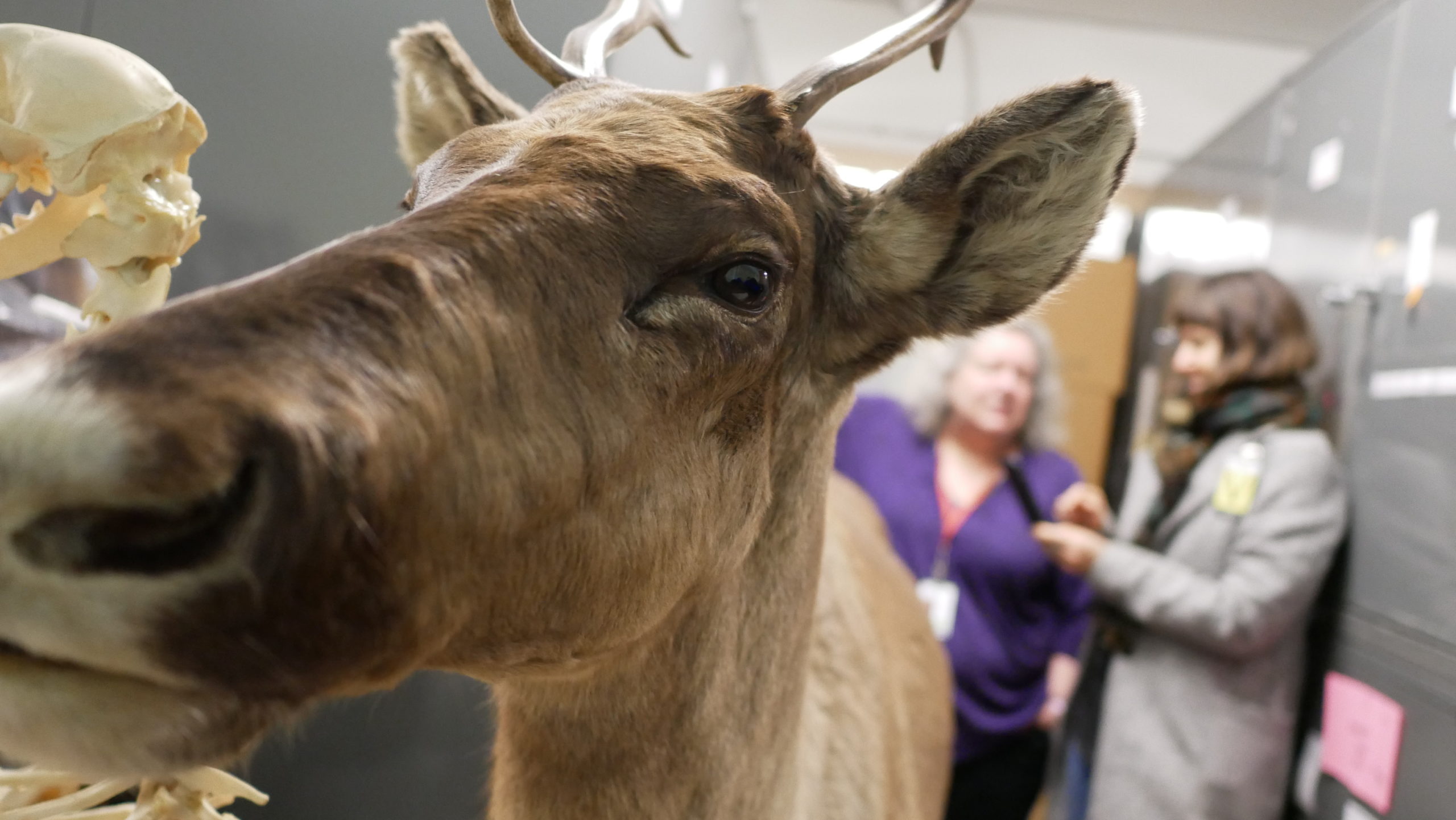
Kennes and journalist Sarah Cox inspect a stuffed caribou cow in a back room of the Royal BC Museum. Photo: Carol Linnitt / The Narwhal
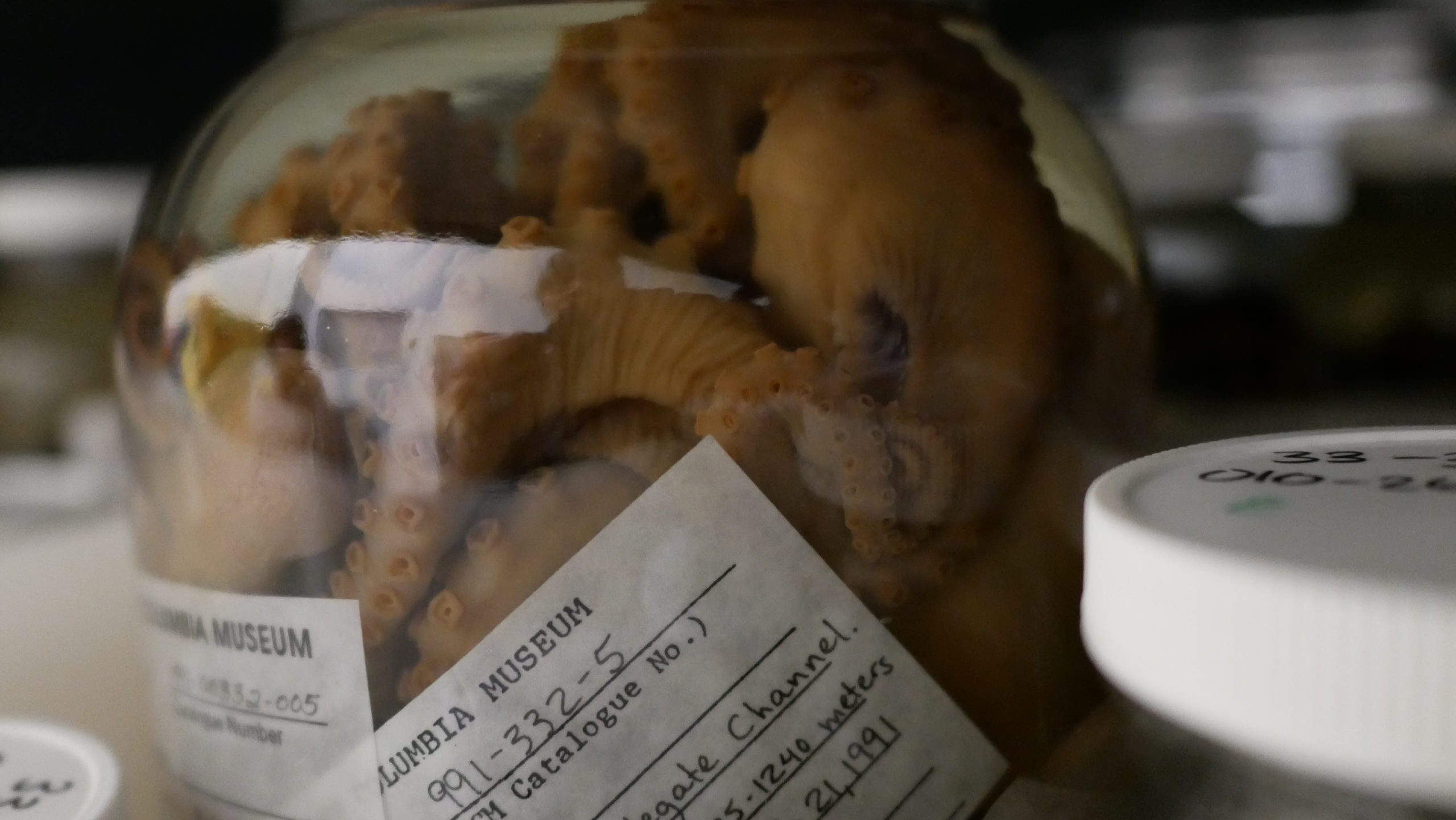
An octopus fills a large jar on a wide shelf in the museum’s backroom collection of sea creatures that includes varieties of crab and sea stars. Photo: Carol Linnitt / The Narwhal
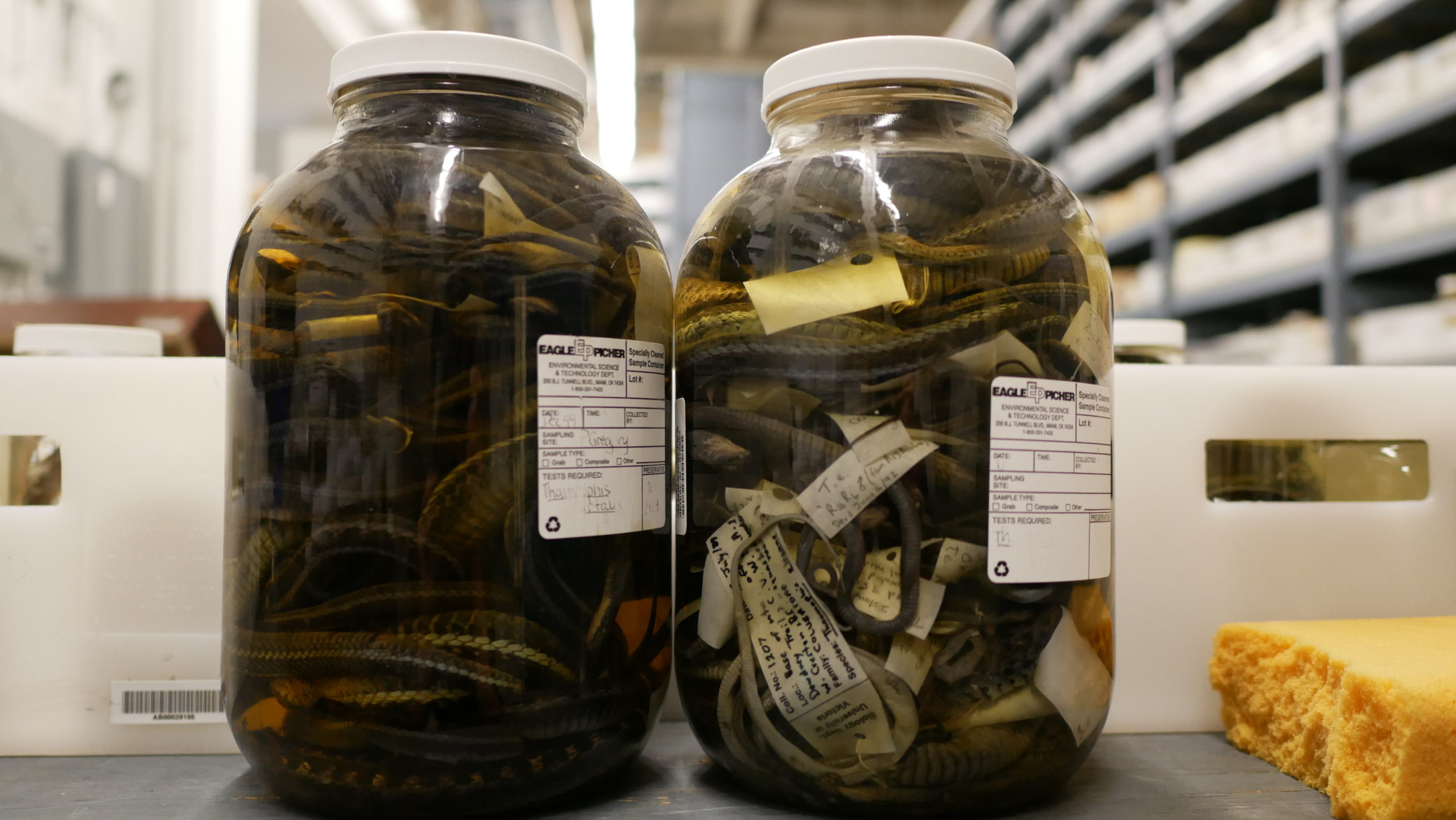
Jars of tagged snake specimens are stored among thousands of species as part of the Royal BC Museum’s extensive collection. Photo: Carol Linnitt / The Narwhal
Canada is lackadaisical when it comes to enforcing environmental laws that could protect species at risk, according to Starzomski.
“When was the last time you saw a conservation officer or a parks employee or someone else who was actually out enforcing a law about not walking on rare species, or not fishing a rare species — for example in a rockfish conservation zone?” he asks.
Since Canada’s Species at Risk Act was created in 2002, the federal government, wary of stepping on the province’s toes and sparking interjurisdictional conflict, has only stepped in twice to protect endangered species, issuing Cabinet orders that overruled provincial decision-making. Both species — the sage grouse and the western chorus frog in southwestern Quebec — were found only on small tracts of land.
B.C., too, fails to enforce provincial regulations to protect endangered species, just as Doyle noted seven years ago.
In 2016, after more than a decade of inaction from the government, Wayne and Leilah Kirsh filed a complaint with the B.C. forest practices board, an independent watchdog for forestry practices. In their complaint, the Kirshes said forestry companies were harvesting heavily on their traplines, with no designated cutting areas.
“There seems to be no consideration or concern being given to maintaining furbearer habitat, ungulate habitat, or bird habitat, or [for] any other animal, bird, or aquatic species …,” the couple wrote. “Because of over harvesting forest practices, we feel that this has harmed the fisher population to the point they are becoming extinct in our area.”
In a box on the complaint submission labelled “What solution would you like?” the Kirshes said they would like wildlife to have “some habitat to survive” so all user groups — including trappers, hunters and guide outfitters — could continue to enjoy the outdoors and preserve their livelihoods.
“It is our concern that all user groups will become extinct ourselves when there are no forests or animals left,” they wrote.
“If we could get back to forestry that was on regular rotations, where you have staggered amounts of forest, fisher would probably do okay.”
In 2018, the forest practices board released the results of its investigation into the Kirshes’ complaint.
The board upheld the complaint, saying the B.C. government did not use legal tools available to protect fisher habitat. “While individual licensees made some attempts to retain fisher habitat in their cutblocks, without a coordinated plan, these efforts were insufficient,” the board concluded.
For the Kirshes, the ruling came too late. They stopped trapping fisher for fur in the Nazko in 2014, in a voluntary effort to help the struggling population. In 2015 and 2016, the couple live-trapped 19 fisher for a reintroduction project in Washington state’s Cascade Mountains. The following summer, their wood frame cabin by Deepdown Lake was razed by a forest fire.
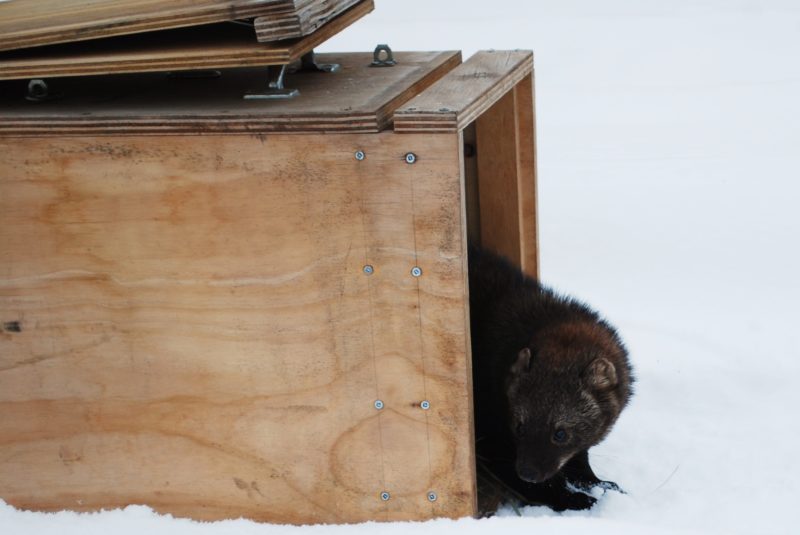
The Kirshes stopped trapping fisher for fur in the Nazko in 2014, in a voluntary effort to help the struggling population. In 2015 and 2016, the couple live-trapped 19 fisher for a reintroduction project in Washington state’s Cascade Mountains. Photo: Leilah Kirsh
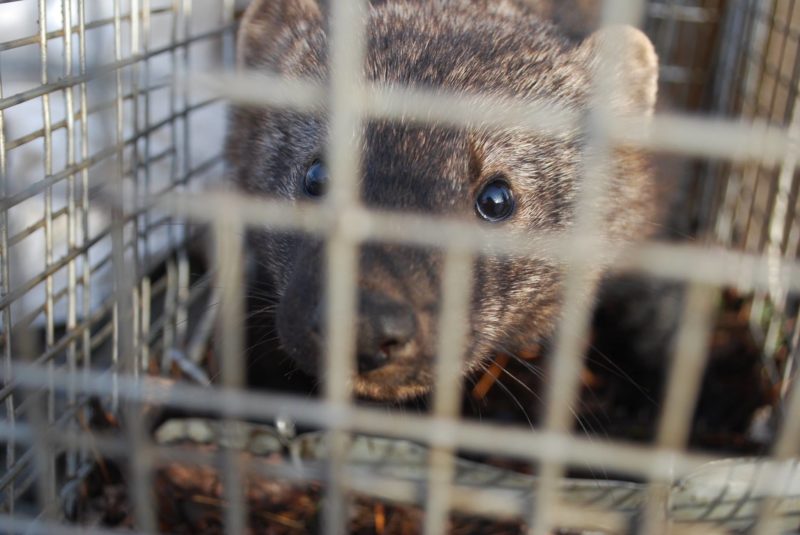
A fisher the Kirshes trapped for a reintroduction program in Washington State. Photo: Leilah Kirsh
“I won’t go back,” Leilah says. “I don’t think I could go back now. It’s too painful. You have your heart set on what you want your life to look like, and that part of it is not going to happen.”
She says the couple, who have since purchased a trapline near the B.C.-Yukon border, an 18-hour drive from their home, was motivated to protect fisher populations “not just for us.”
“It was for the entire province of British Columbia. We really wanted the government to look after our natural resources. We thought they could do a lot better.”
The wildlife biologist Davis says if changes are made to forest practices there’s no reason why B.C. can’t have both forestry and fisher.
“Anything that permanently removes productive habitat for fisher is a big threat,” says Davis, who contributed to the B.C. Conservation Data Centre’s fisher assessment.
“If we could get back to forestry that was on regular rotations, where you have staggered amounts of forest, fisher would probably do okay. They’re not like a spotted owl where they need immense tracts of old forest. They actually hunt snowshoe hare, found in younger forests. As long as you had elements of older forests, like some big old trees left over that fishers could use, I think forestry and fisher could co-exist.”
In 2019, in response to the forest practices board report, the B.C. forests ministry said it would develop a provincial fisher management plan. The plan is underway, the ministry said in an email to The Narwhal, with a “targeted” completion date of 2022.
“When you have a species that is in a critical state … the species cannot wait for us to decide what to do, and have it take us 20 years to figure out what to do,” Leilah says.
“They need it done now, before it’s too late.”
Get the inside scoop on The Narwhal’s environment and climate reporting by signing up for our free newsletter. When I visited my reserve, Moose Factory,...
Continue reading

Financial regulators hit pause this week on a years-long effort to force corporations to be...

The Conservative and Liberal parties diverge sharply on Indigenous issues. Here’s what that could mean...

